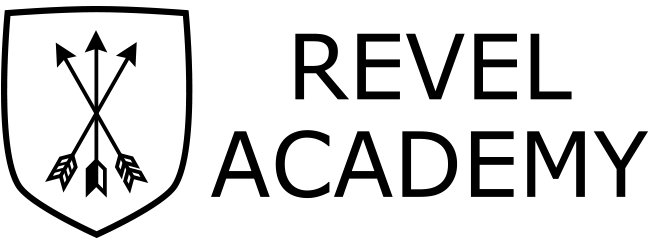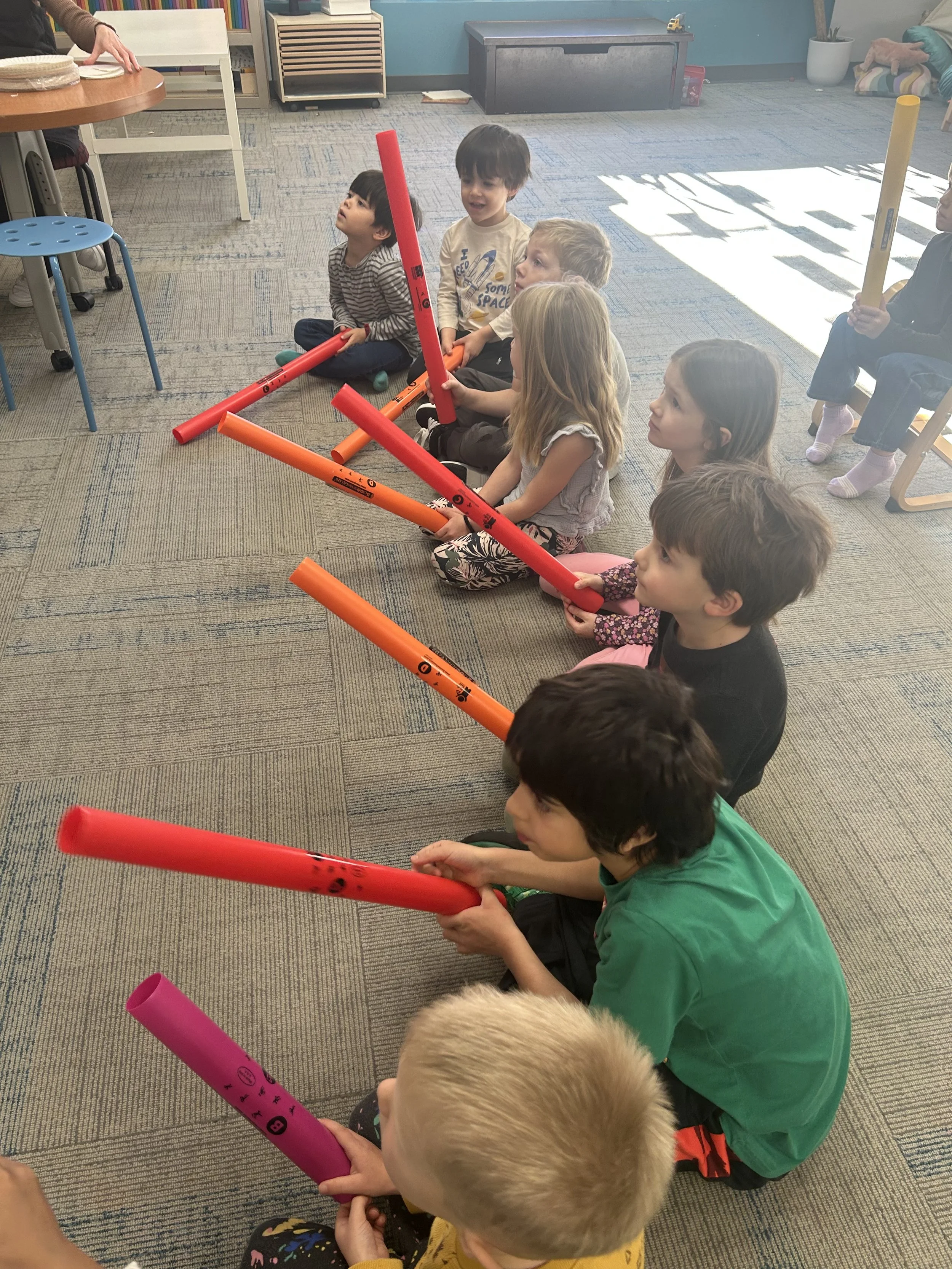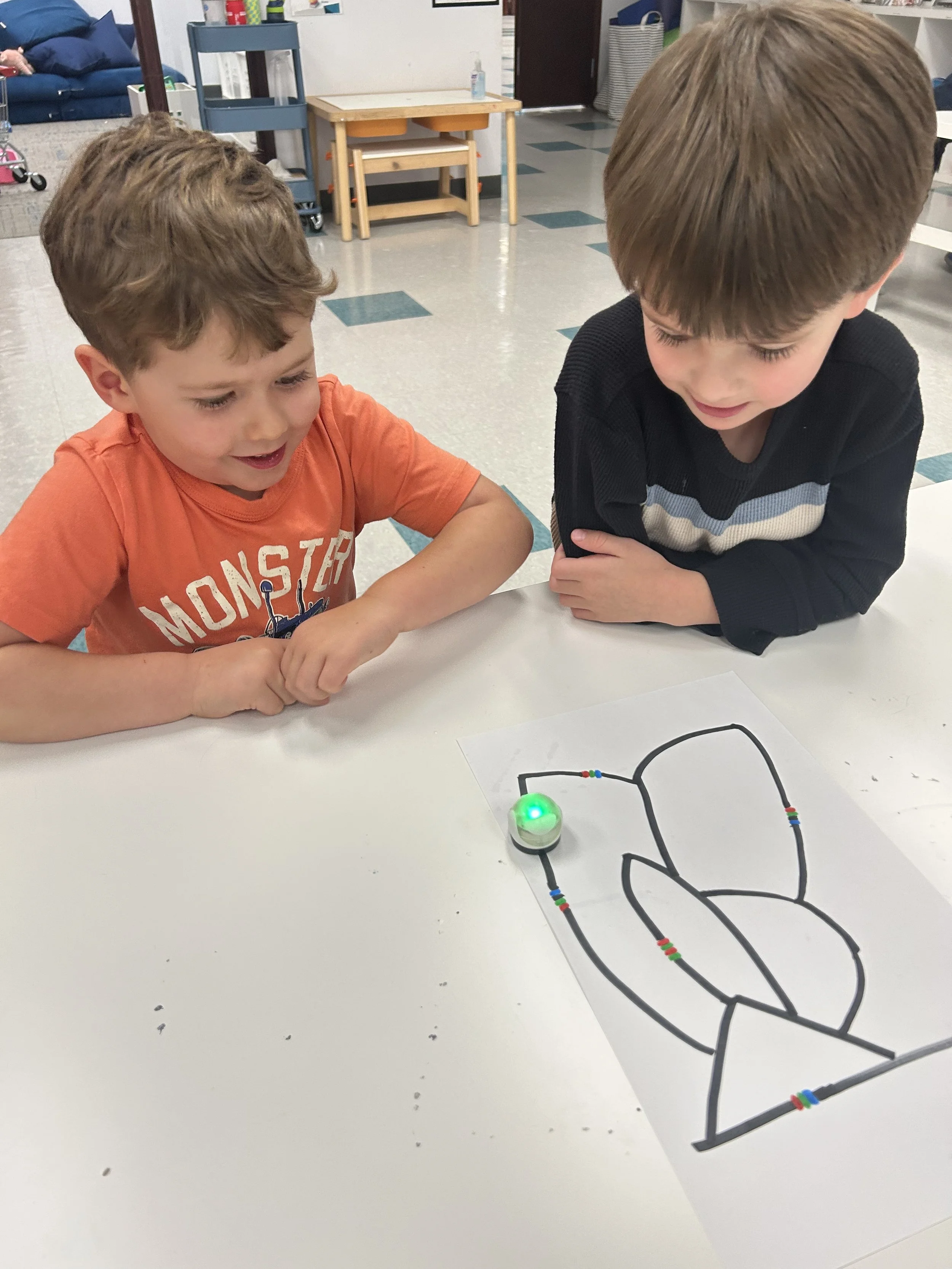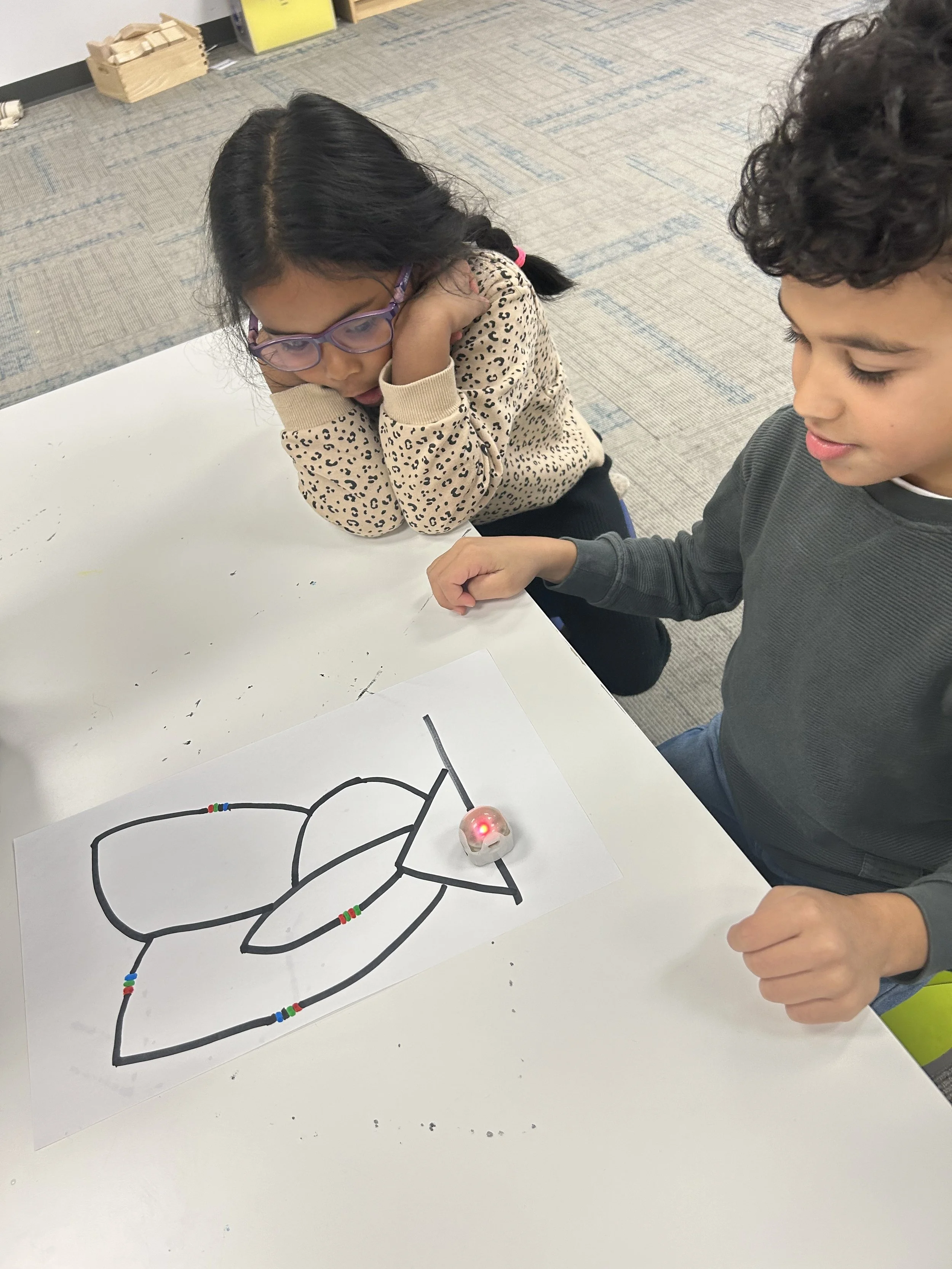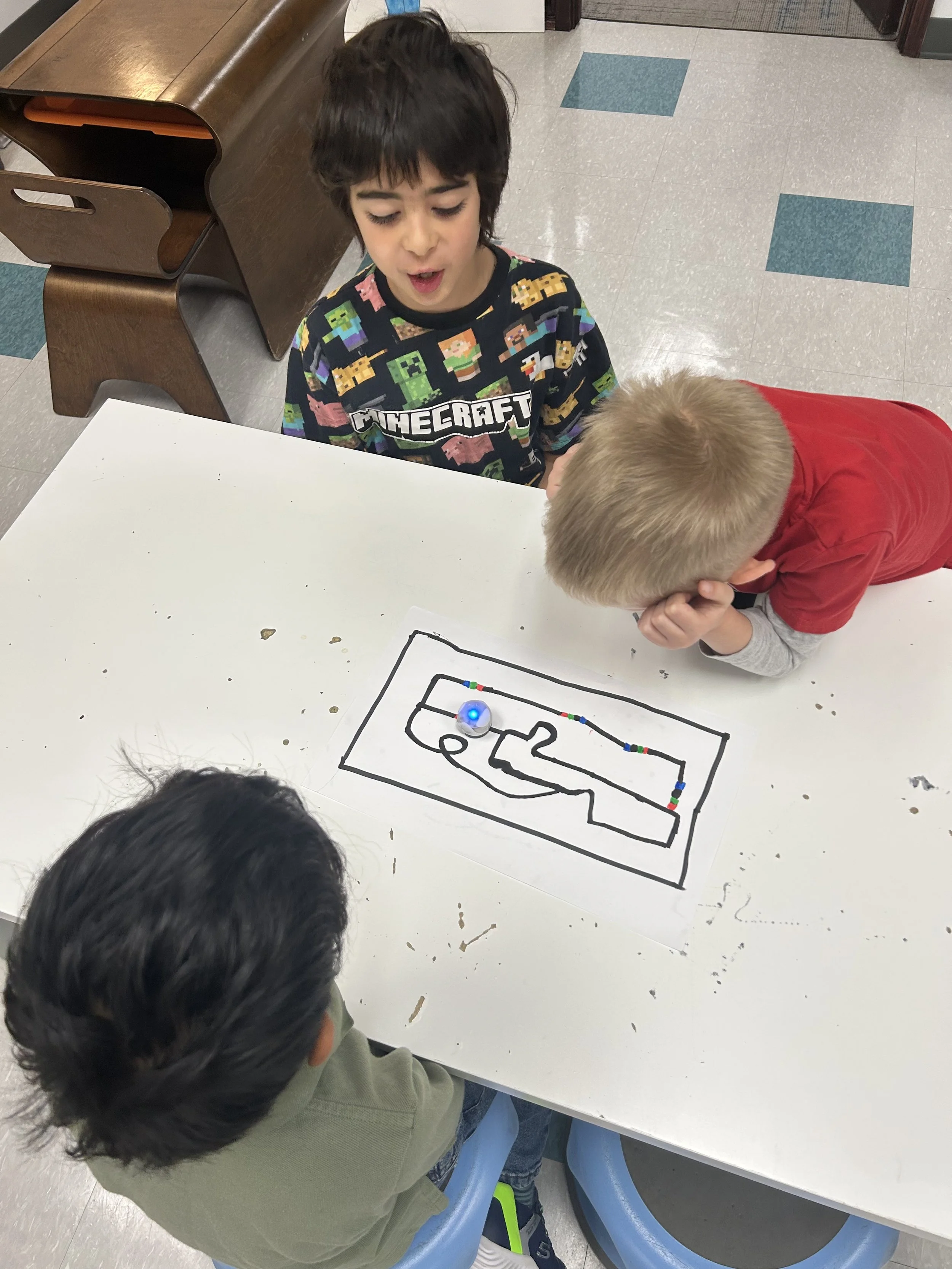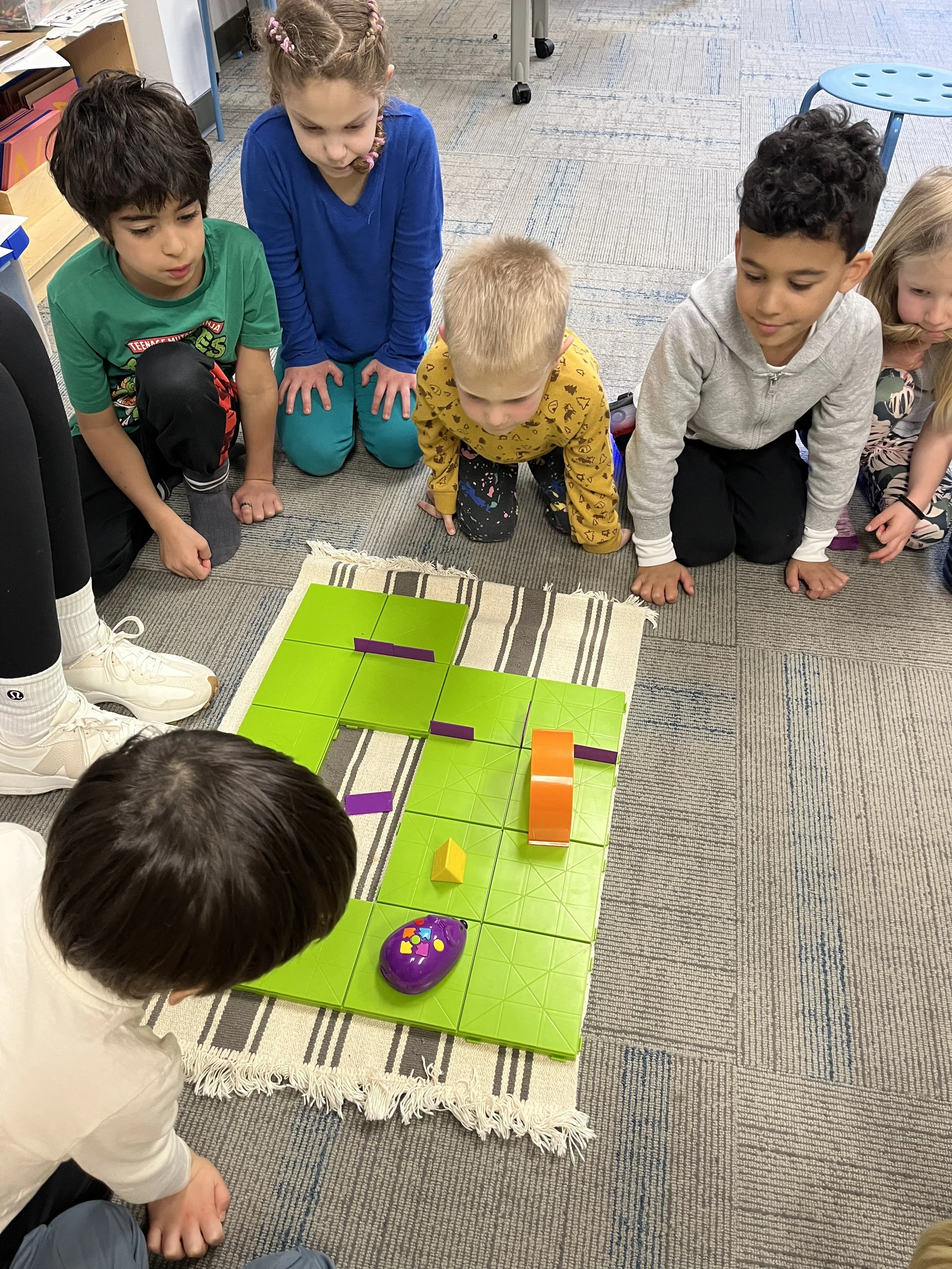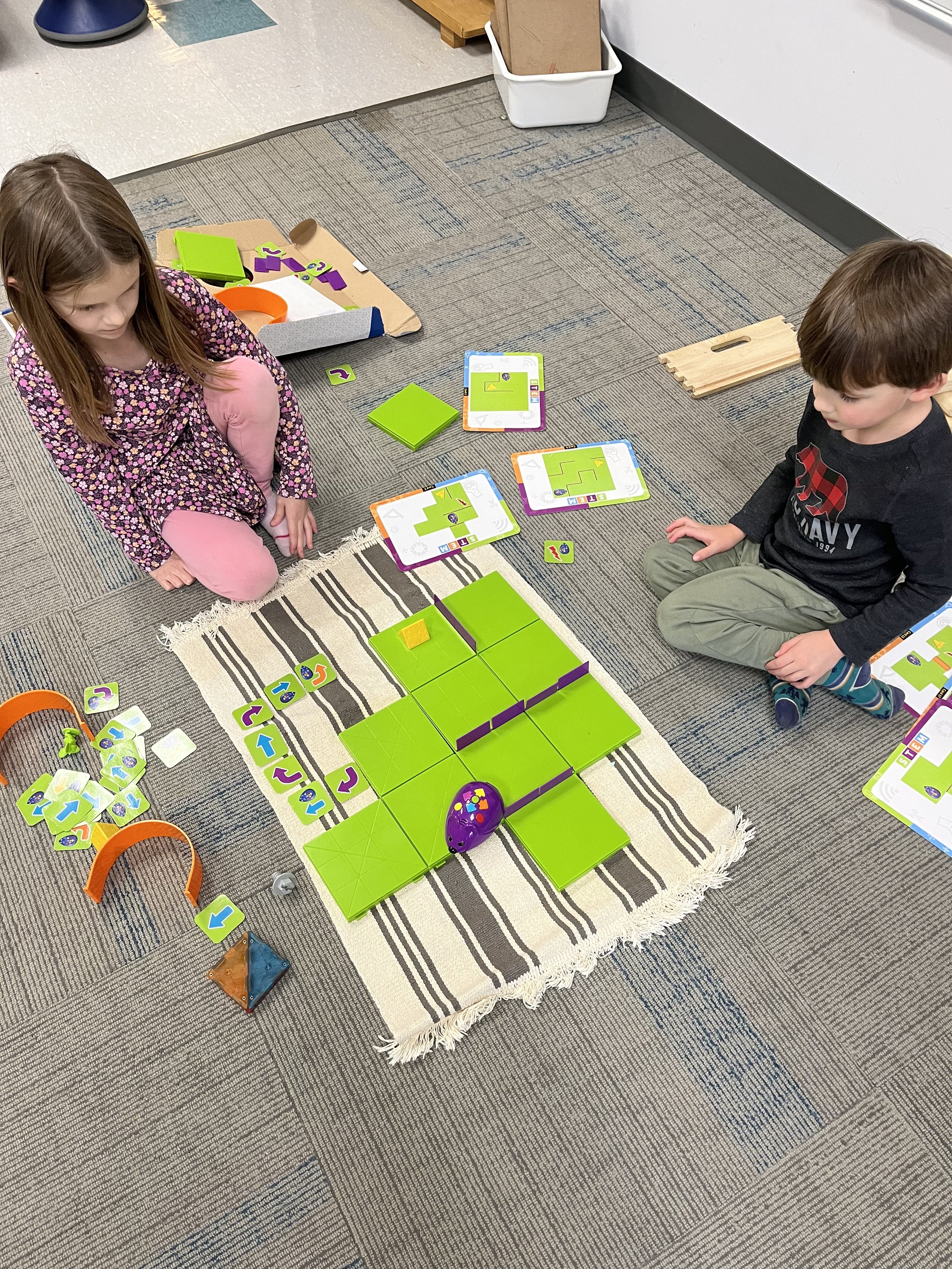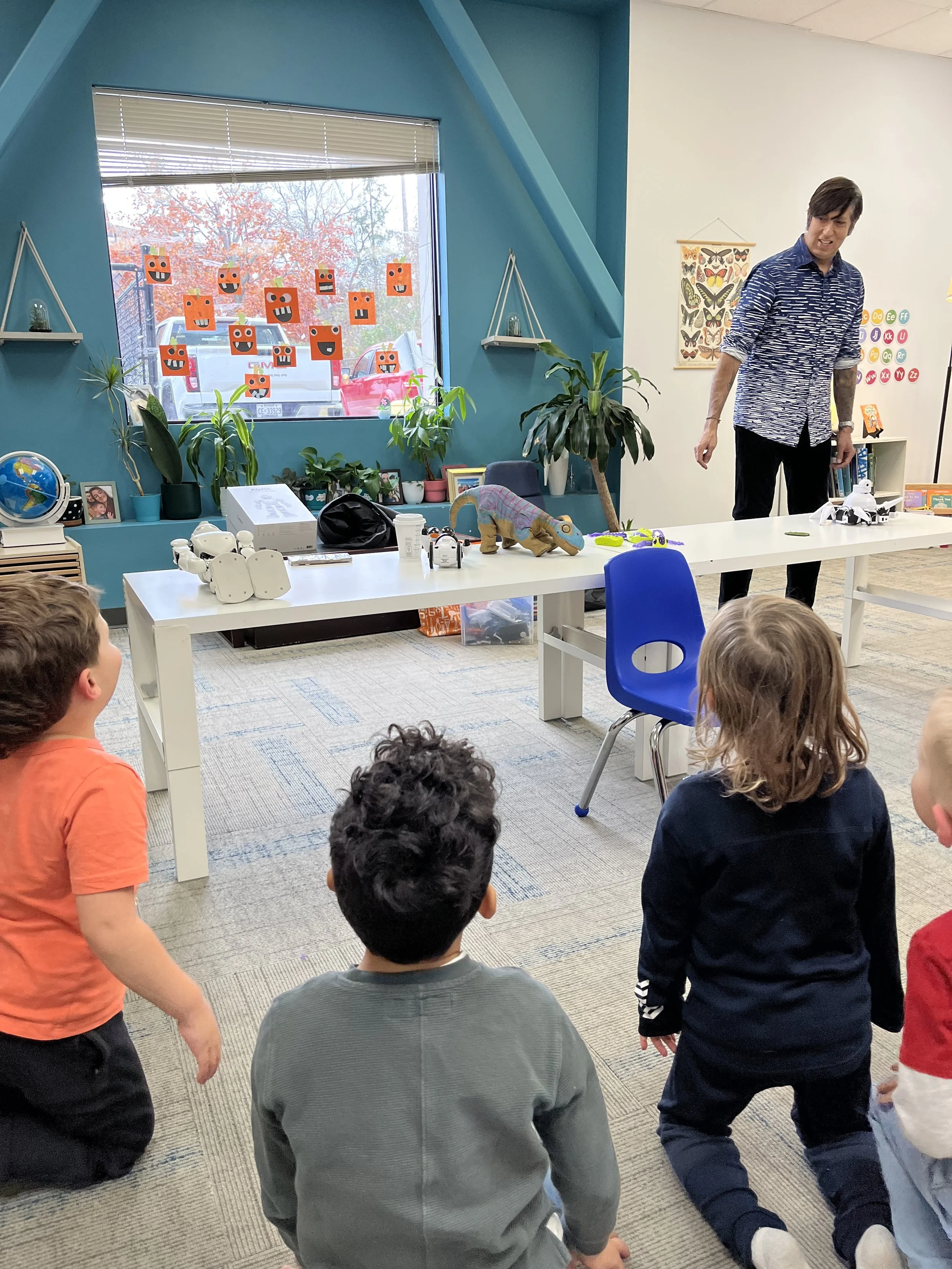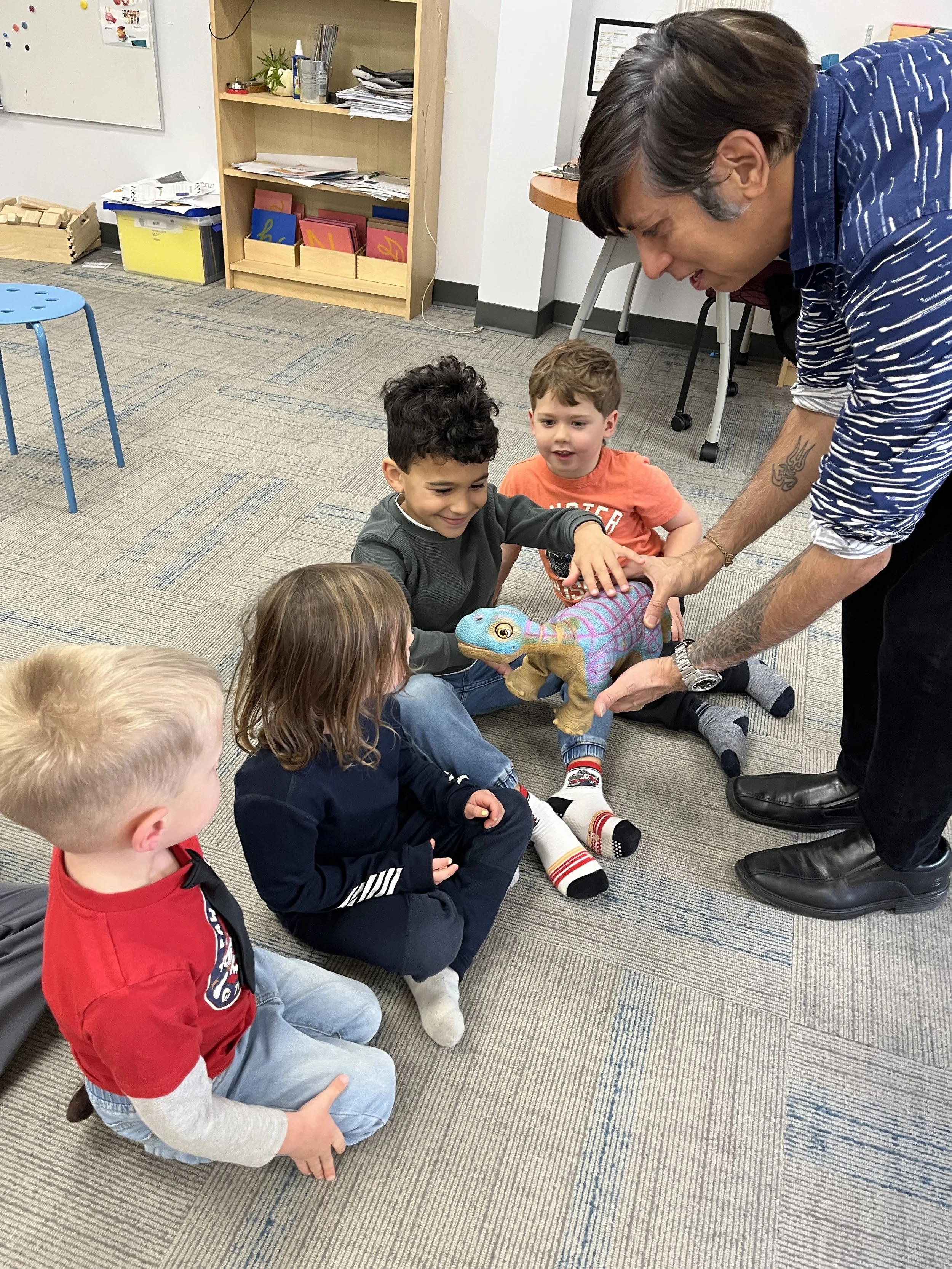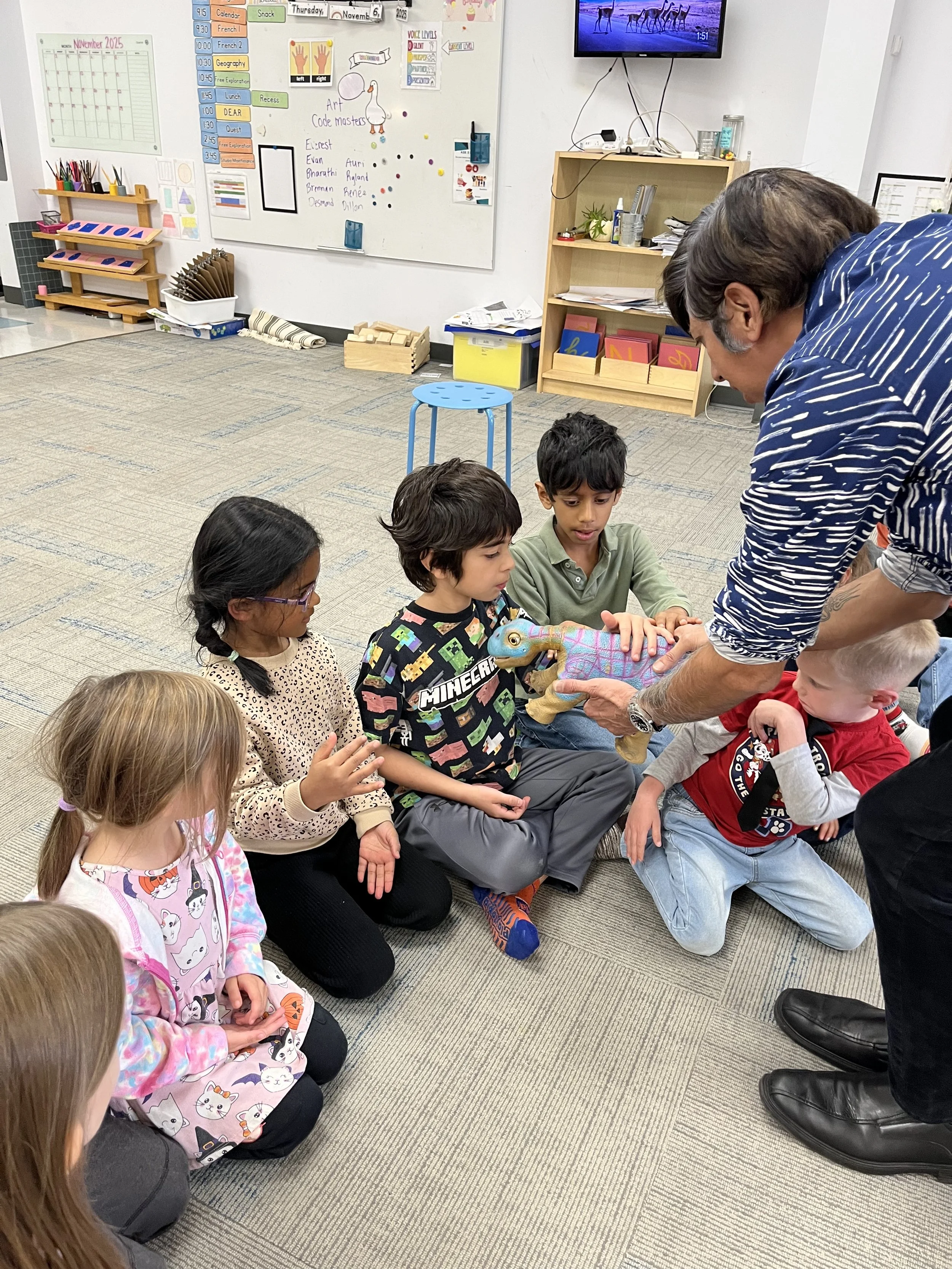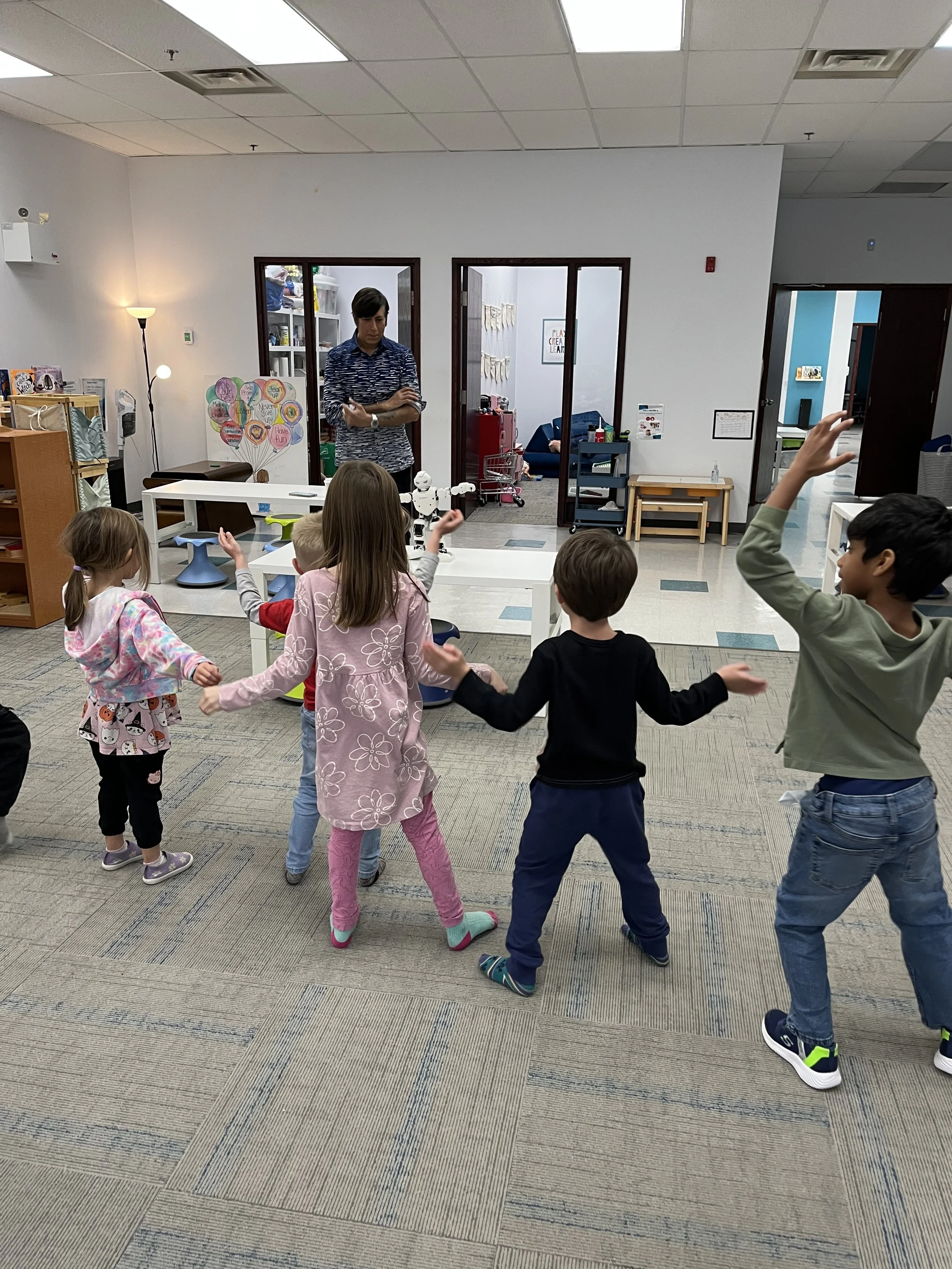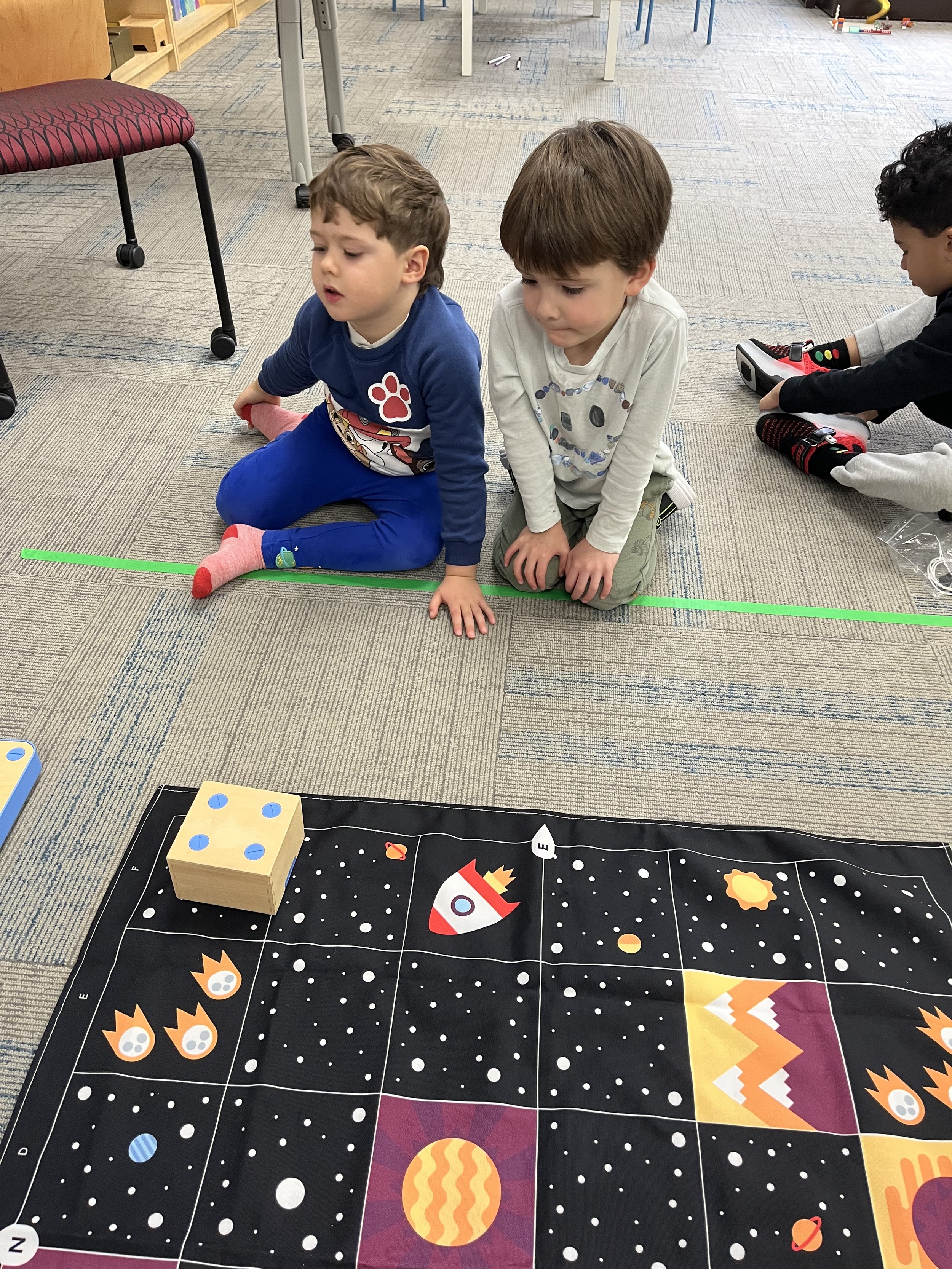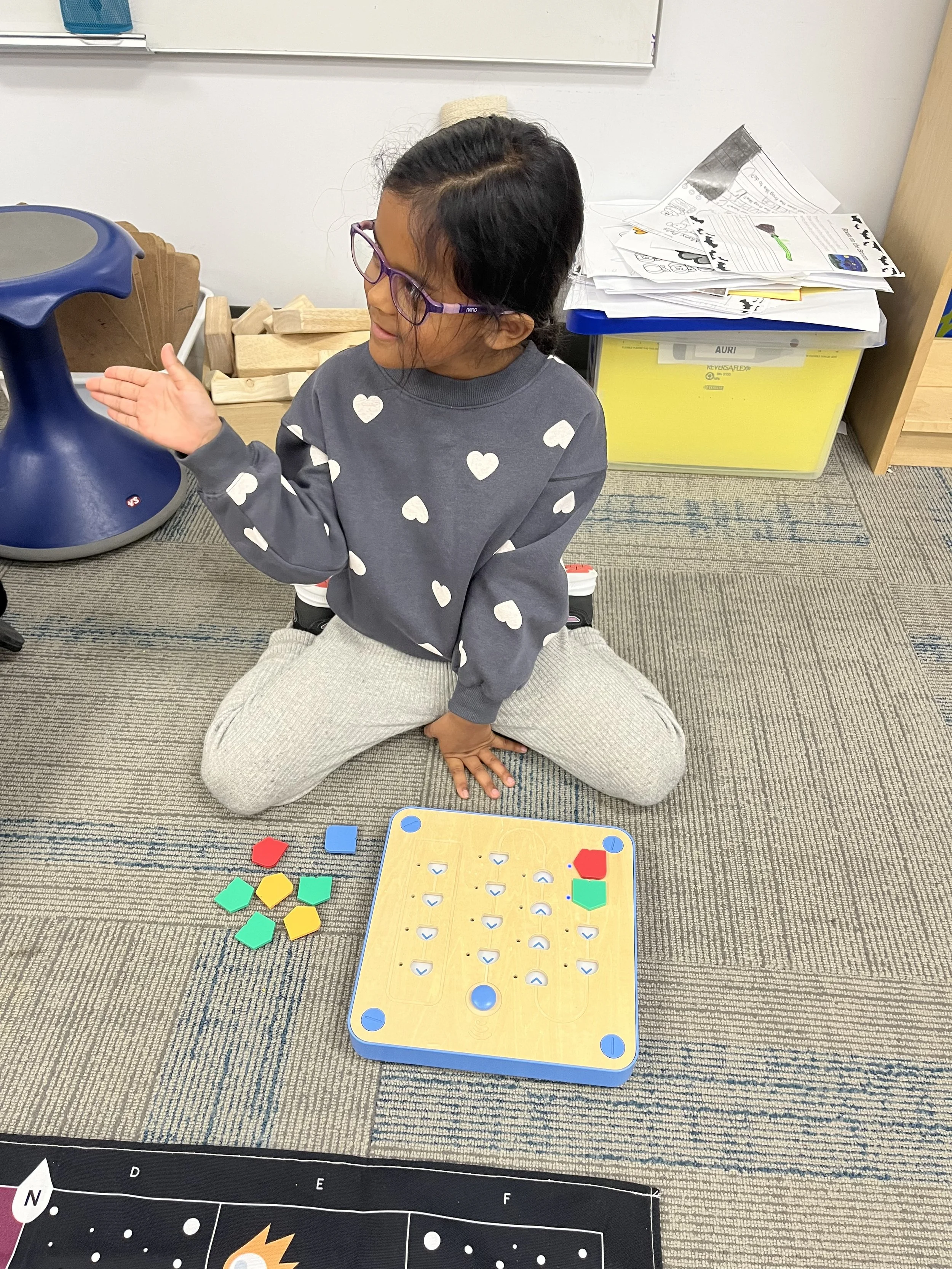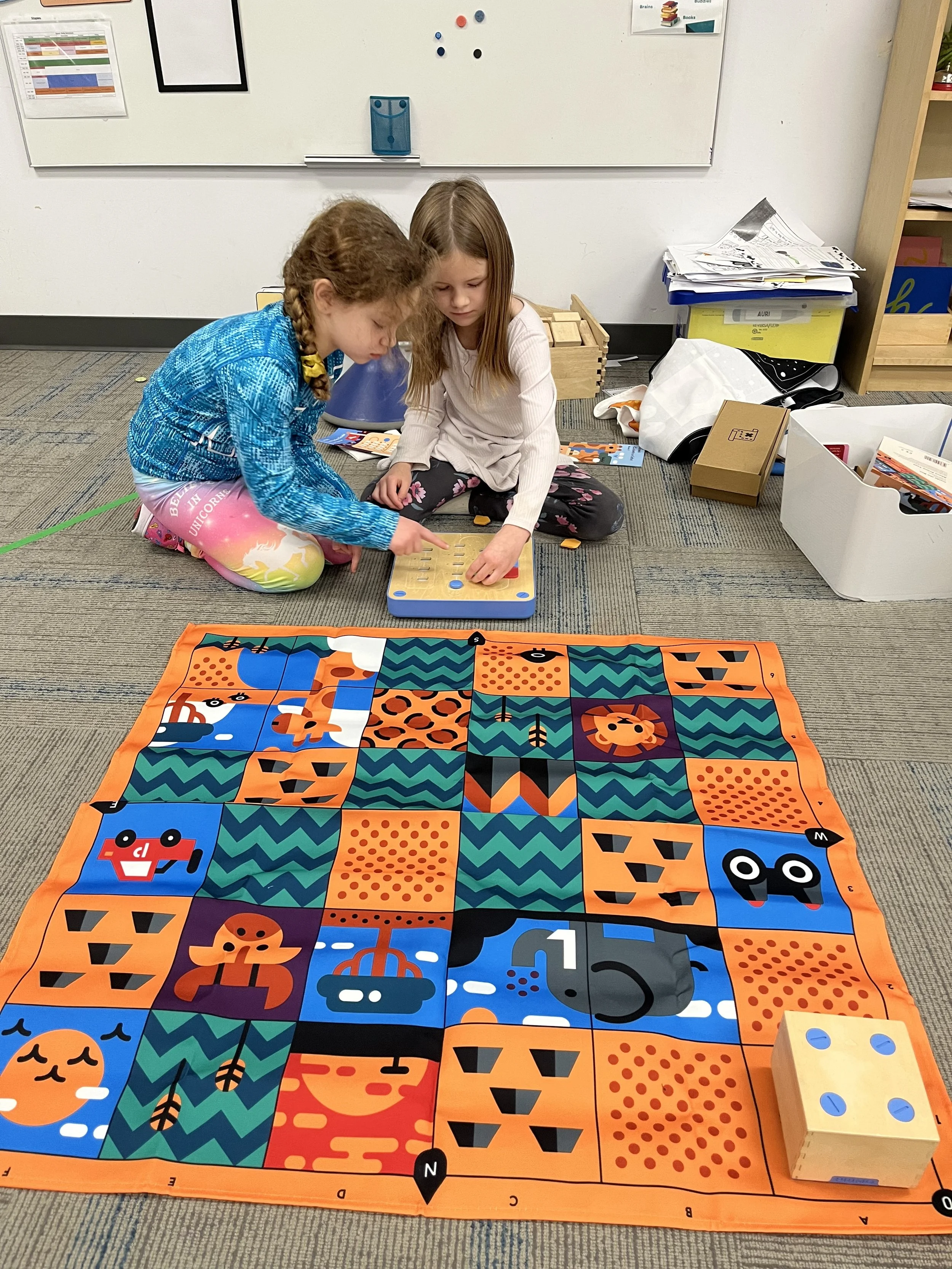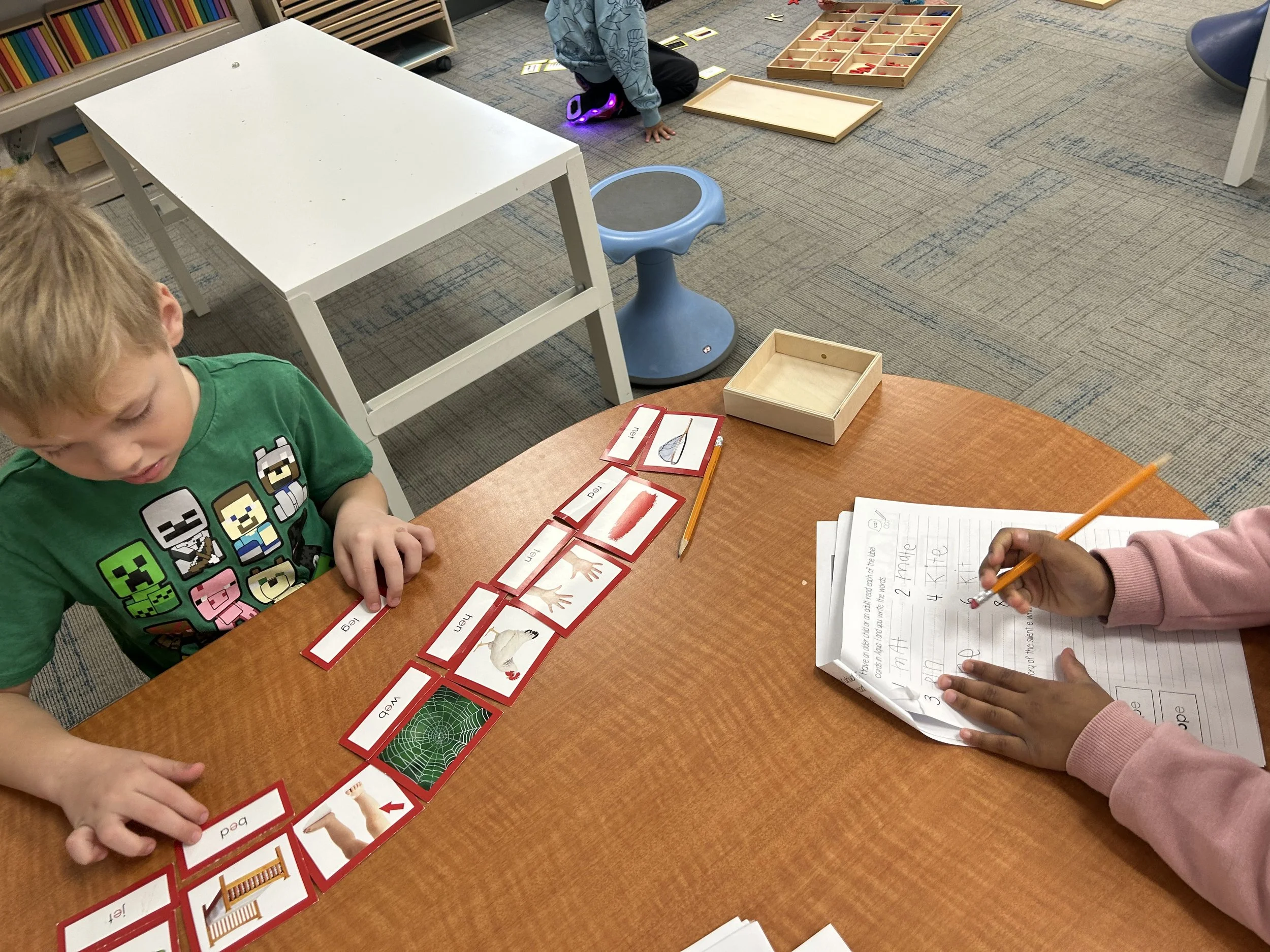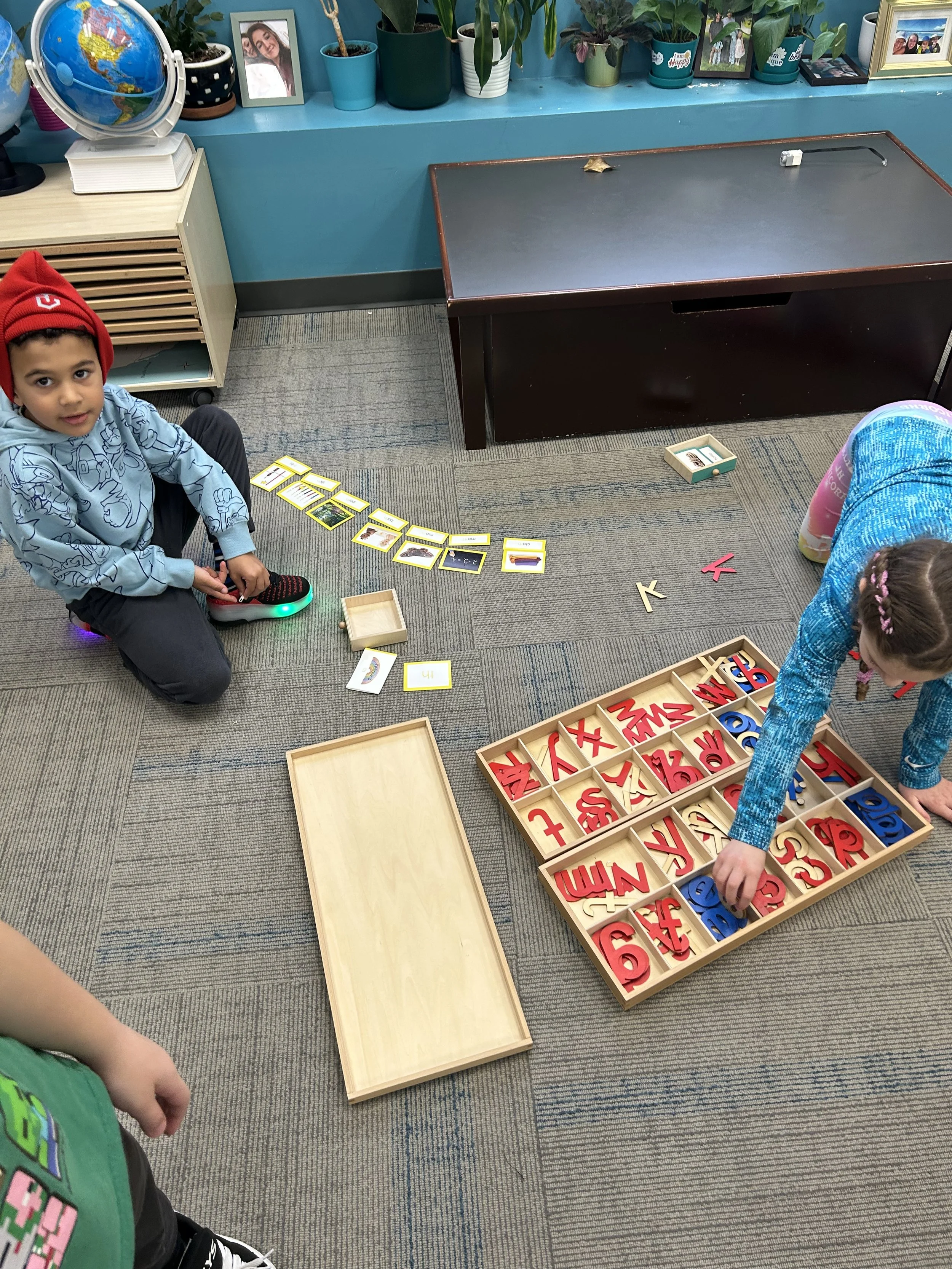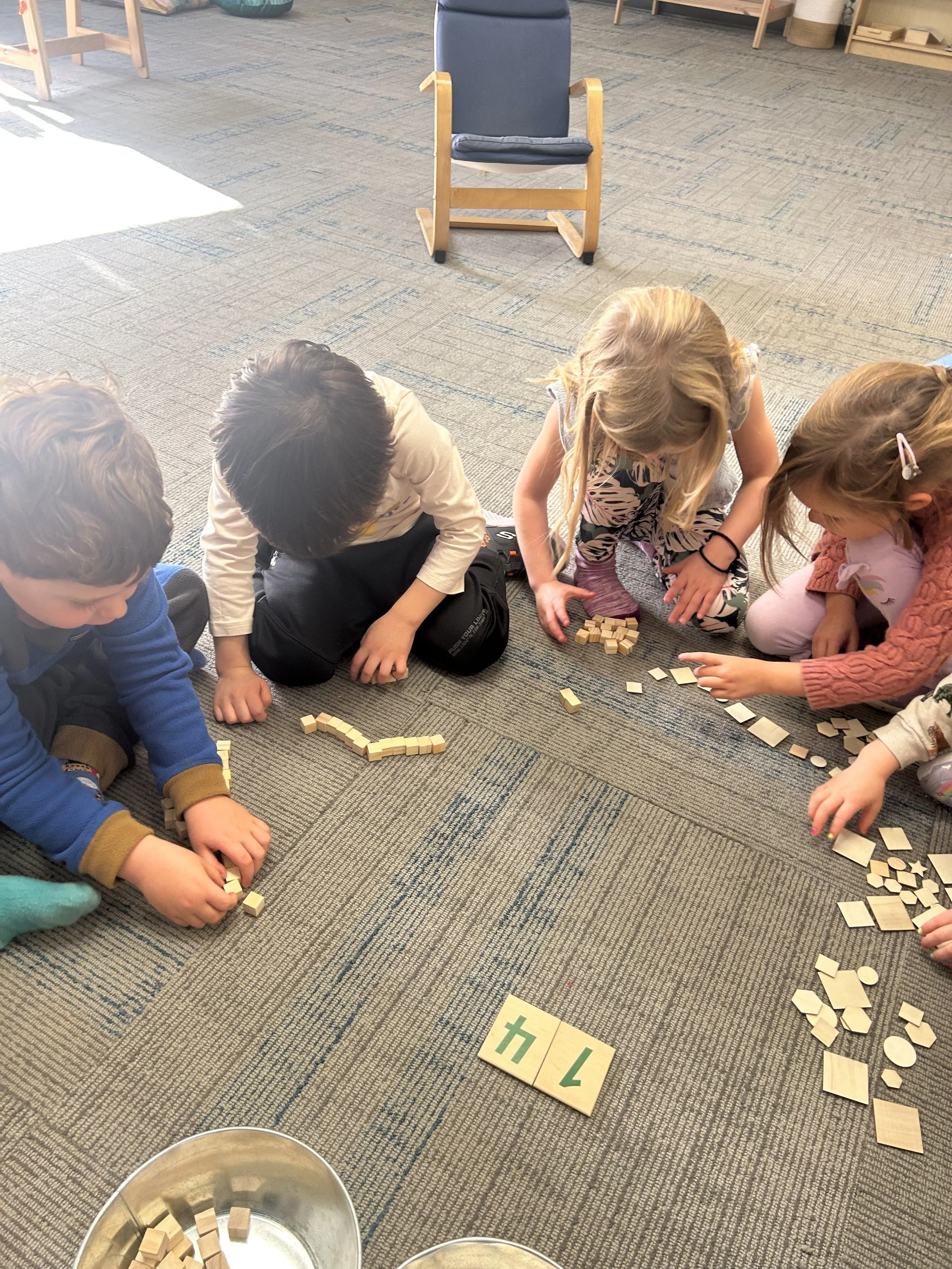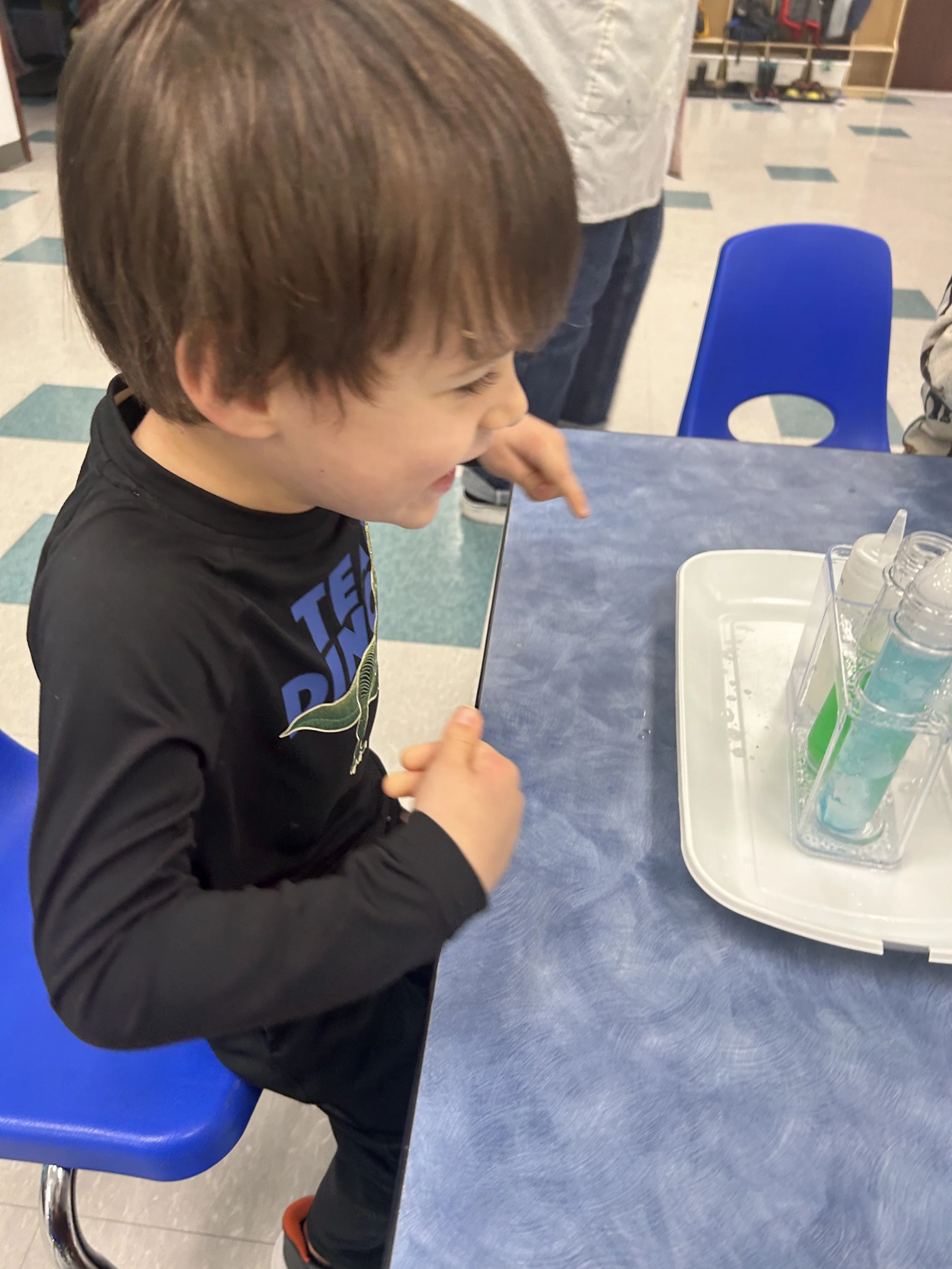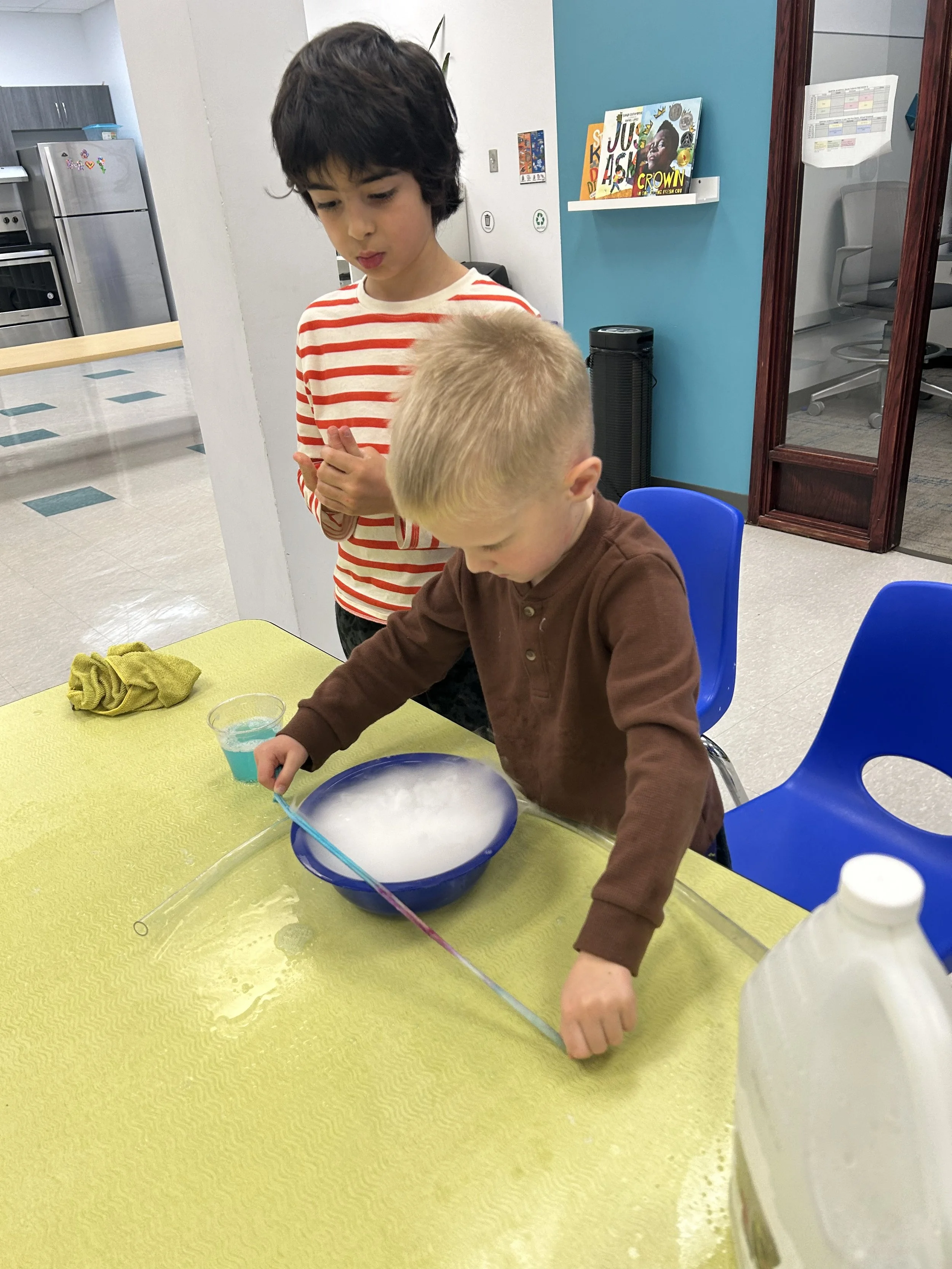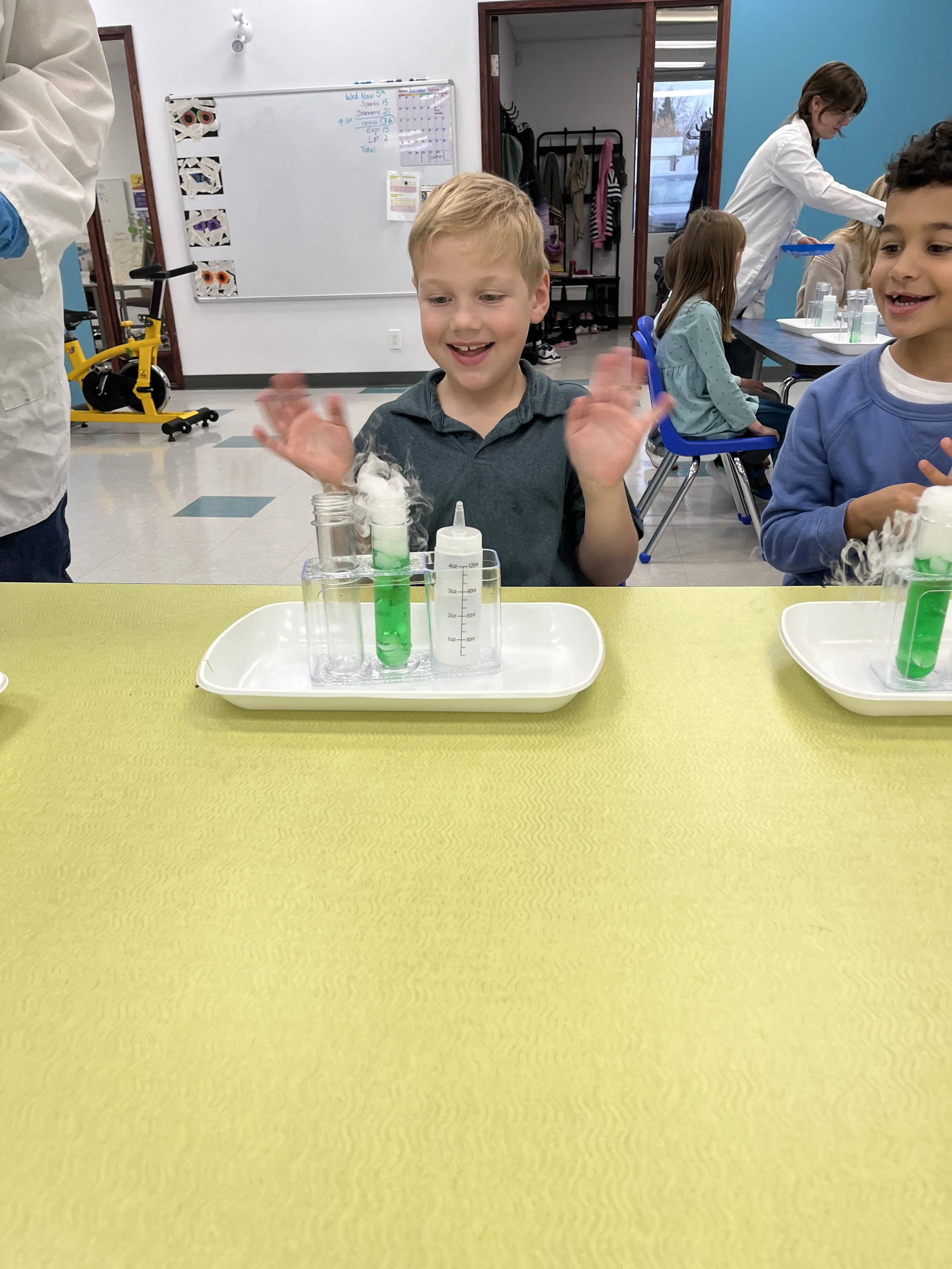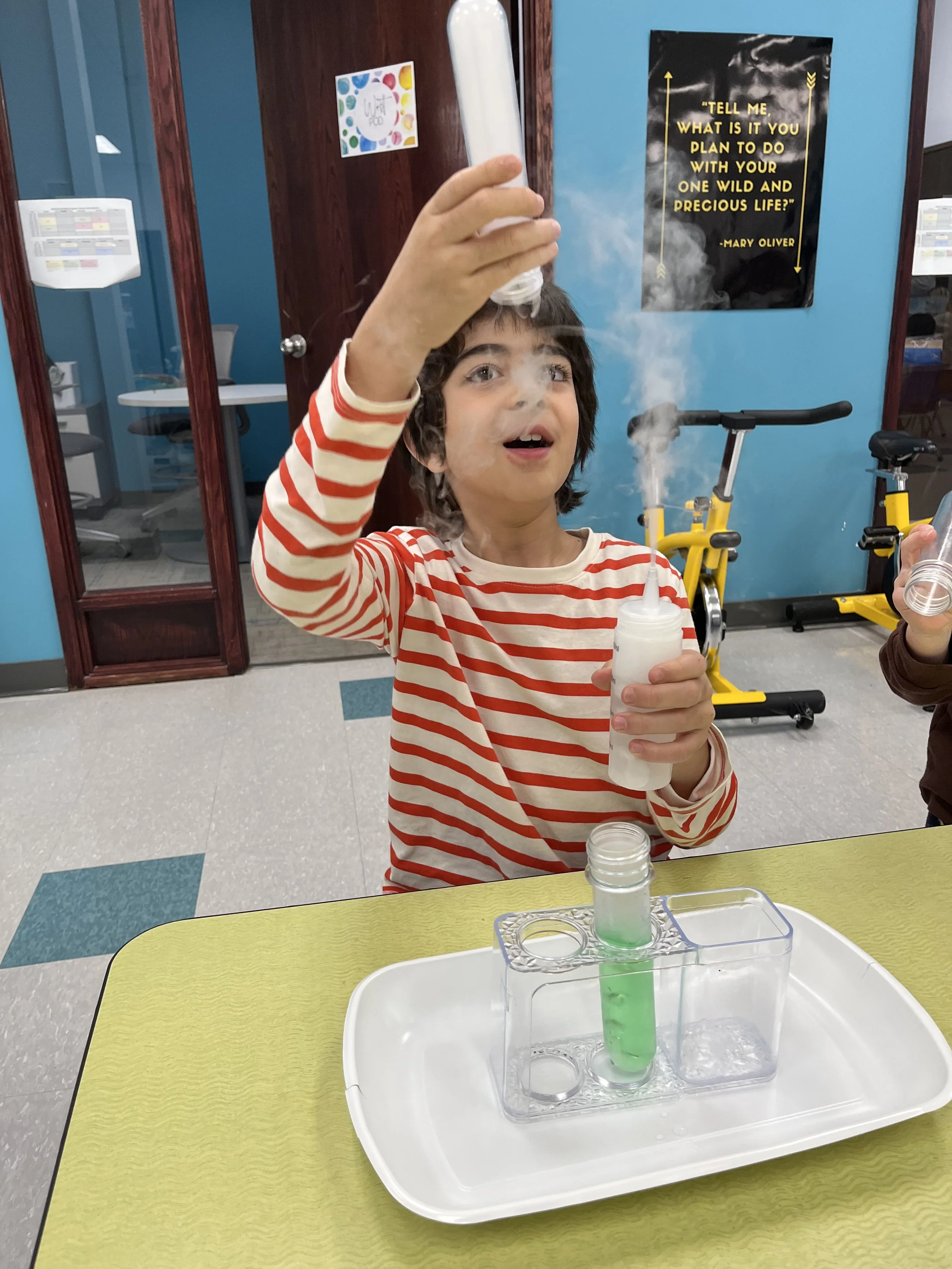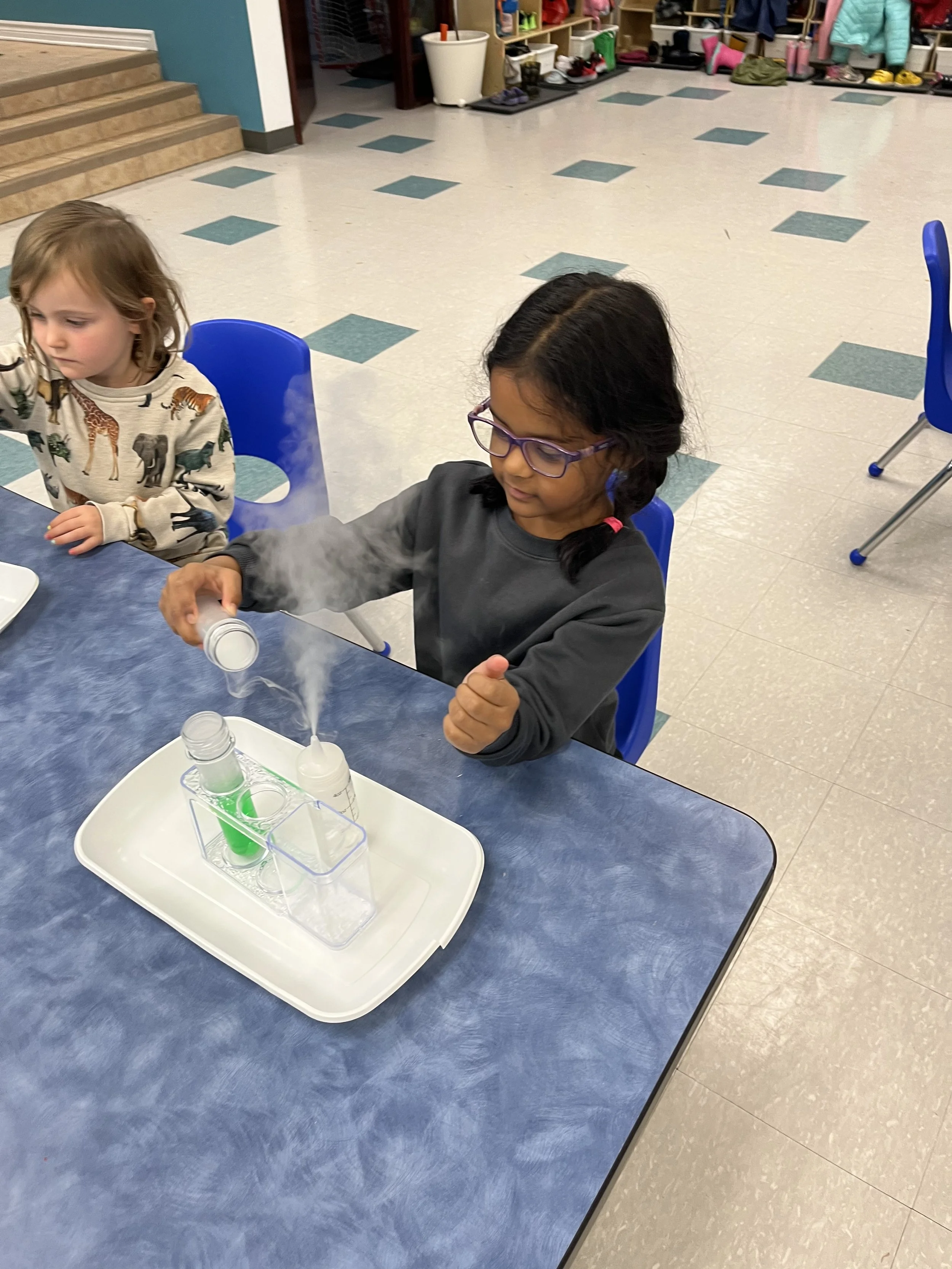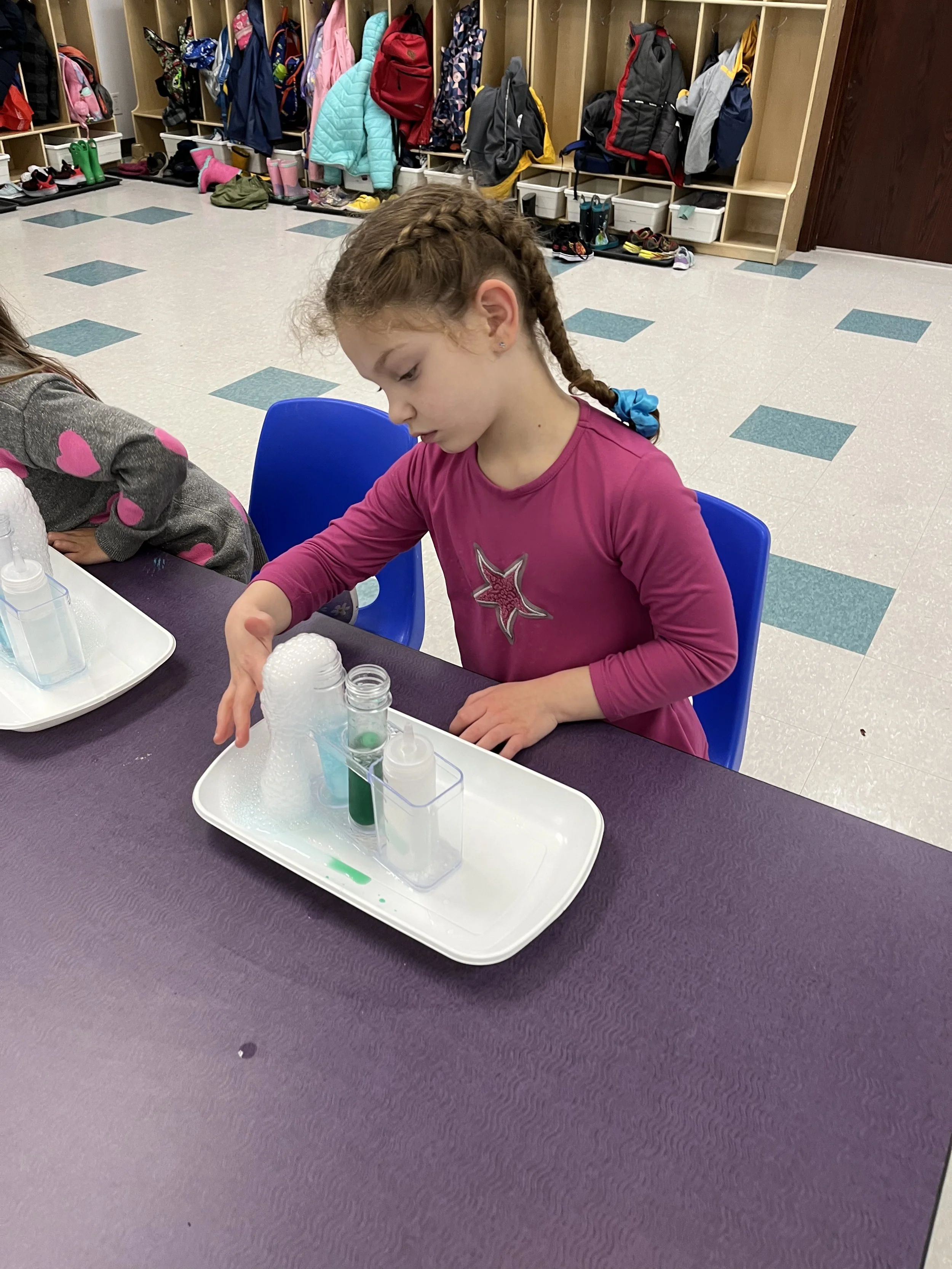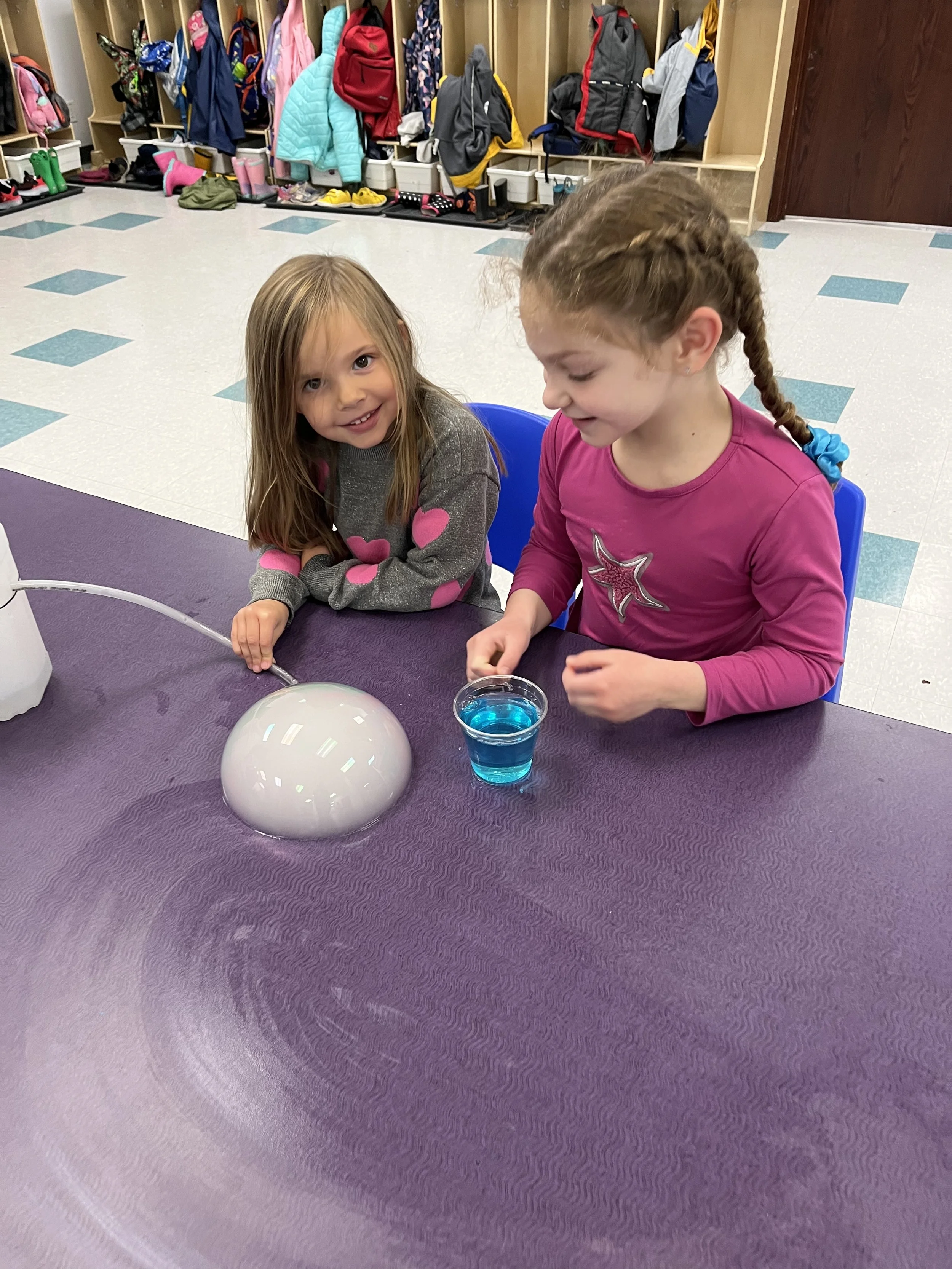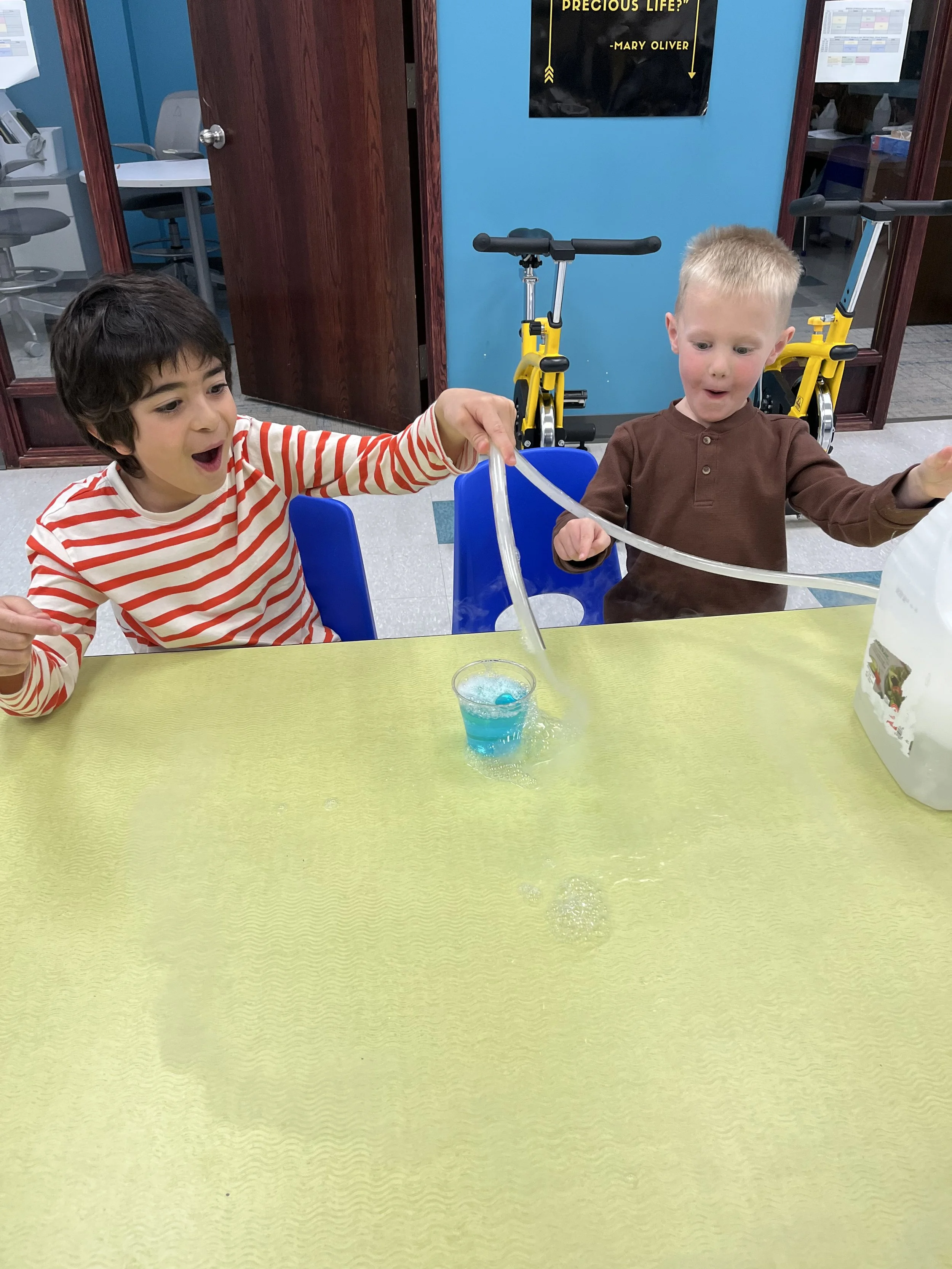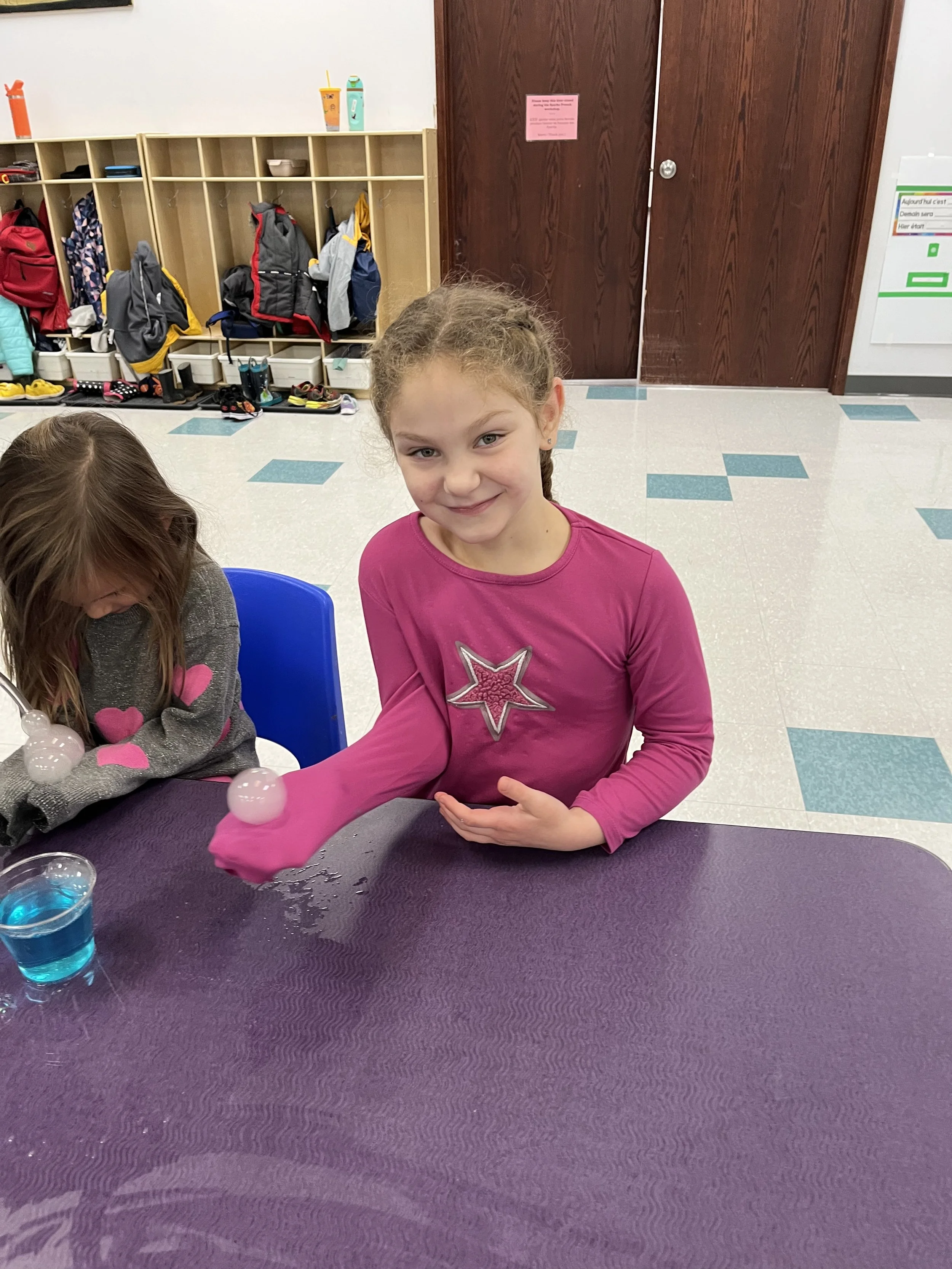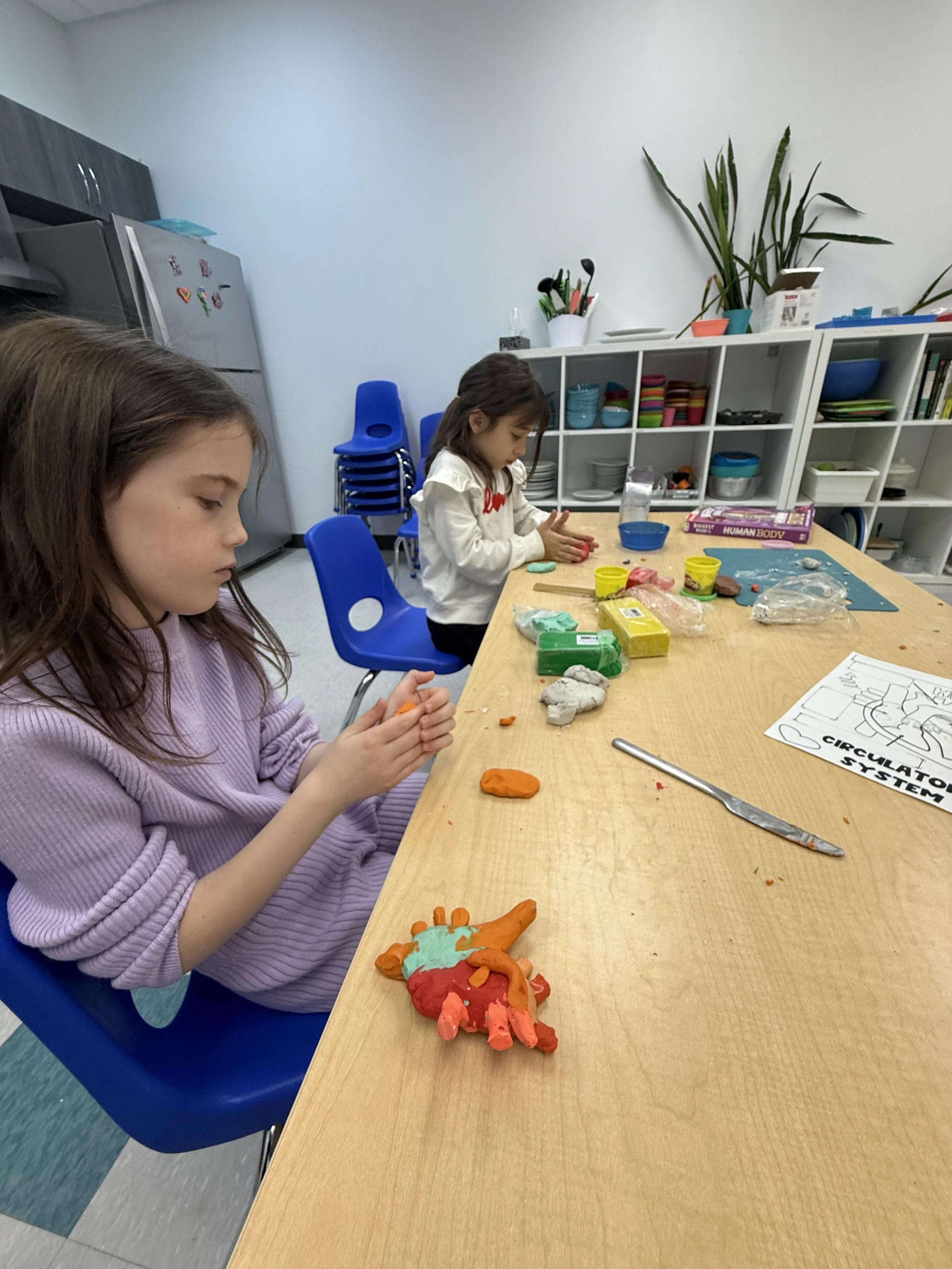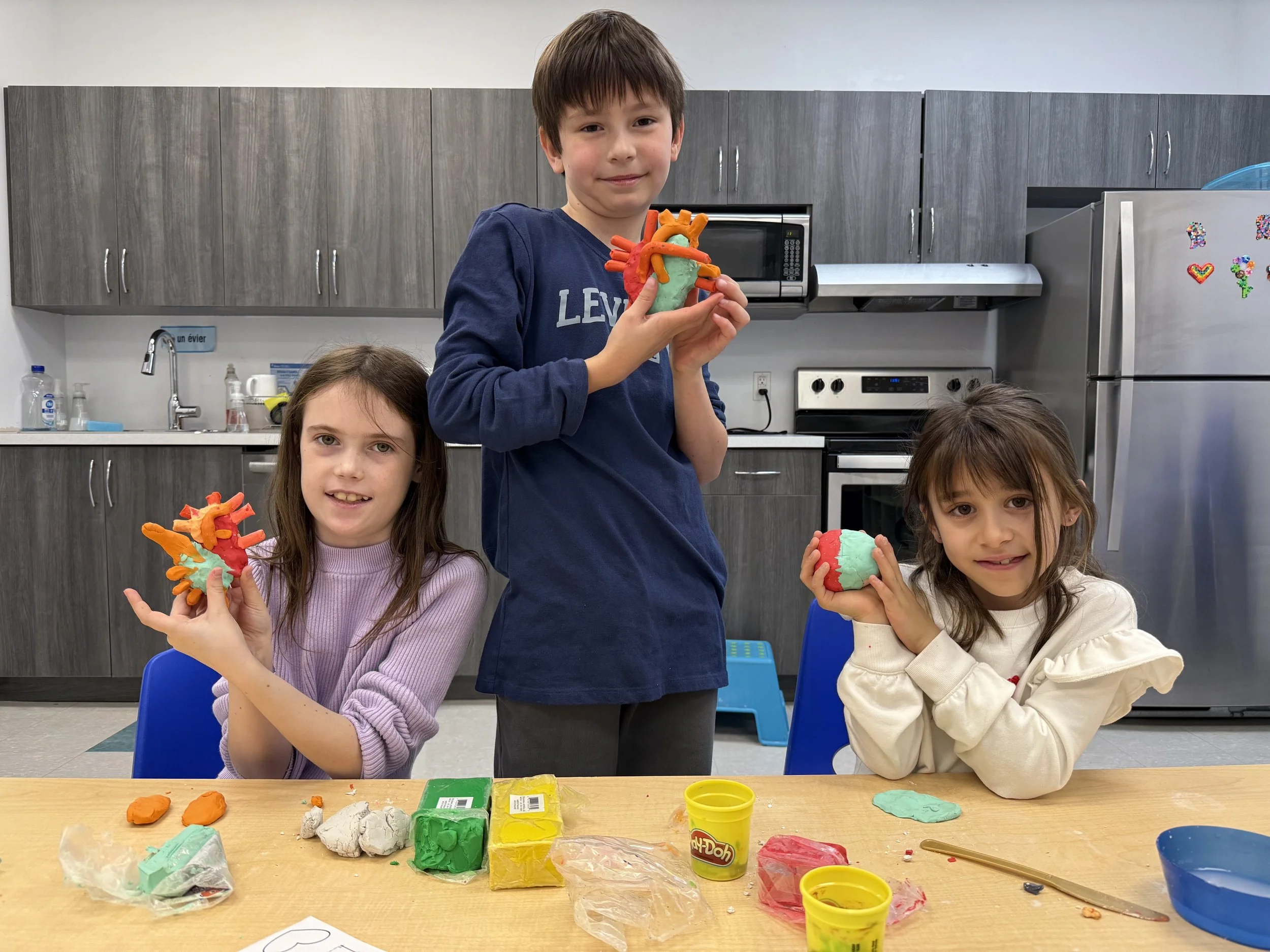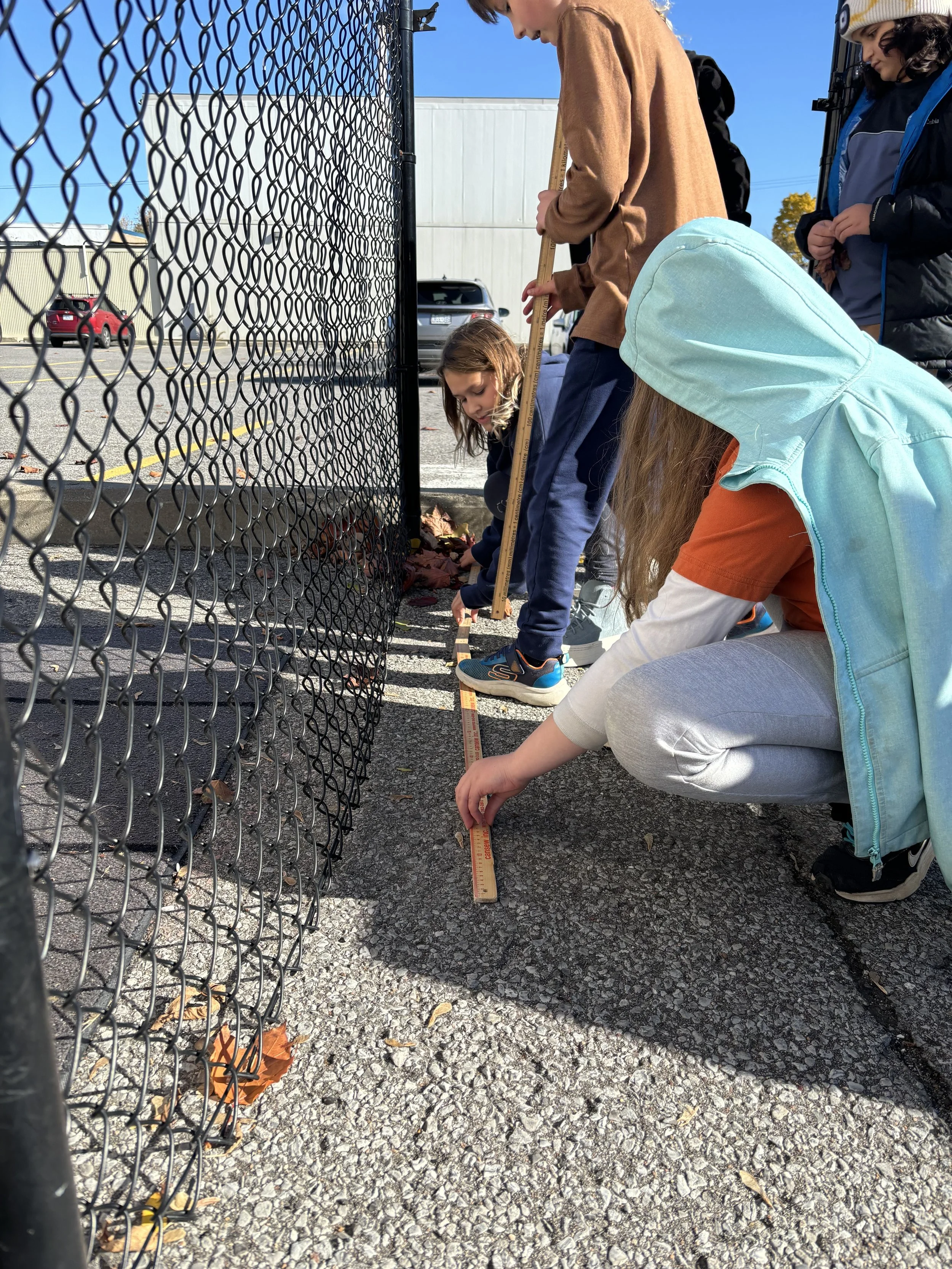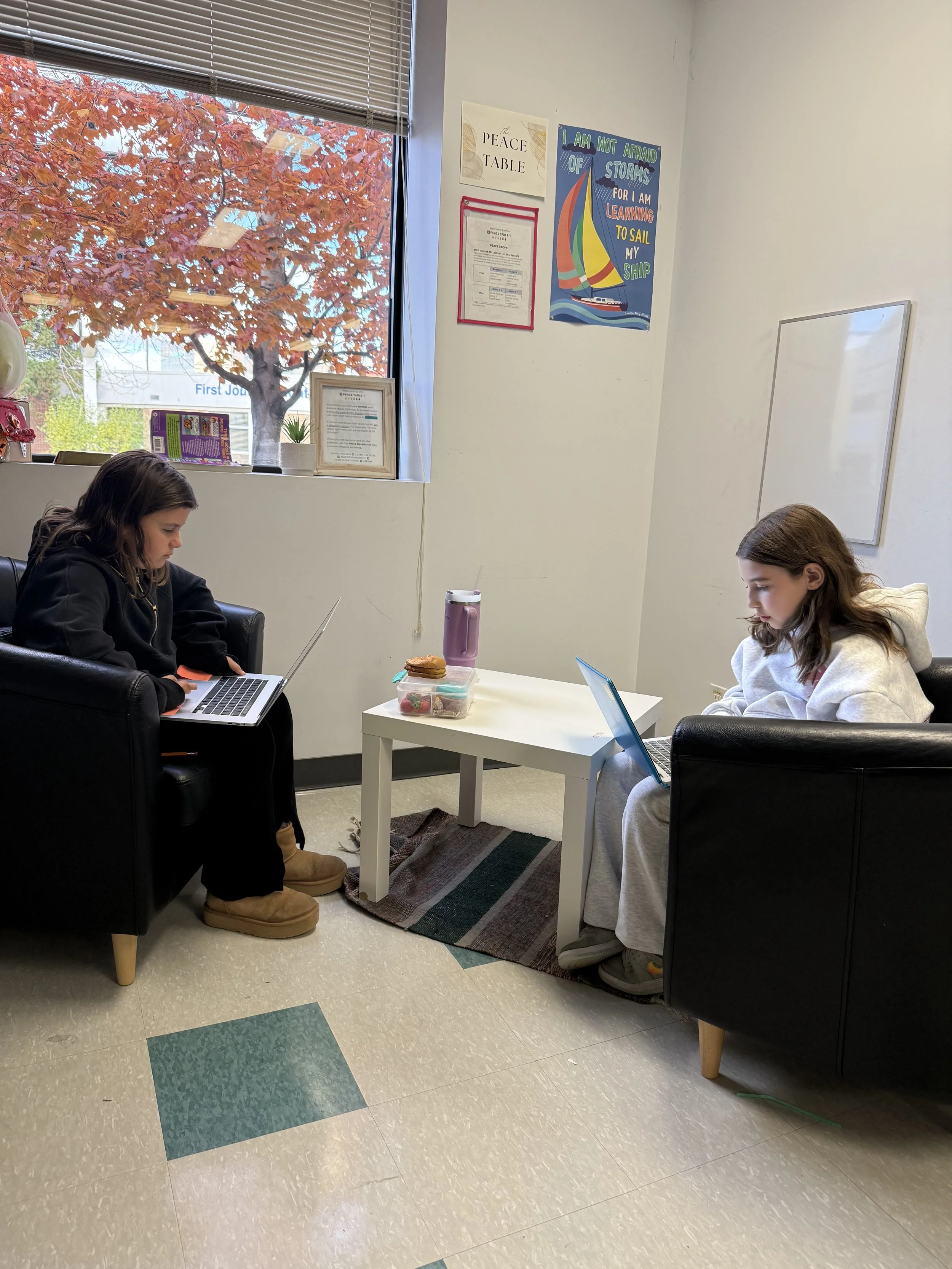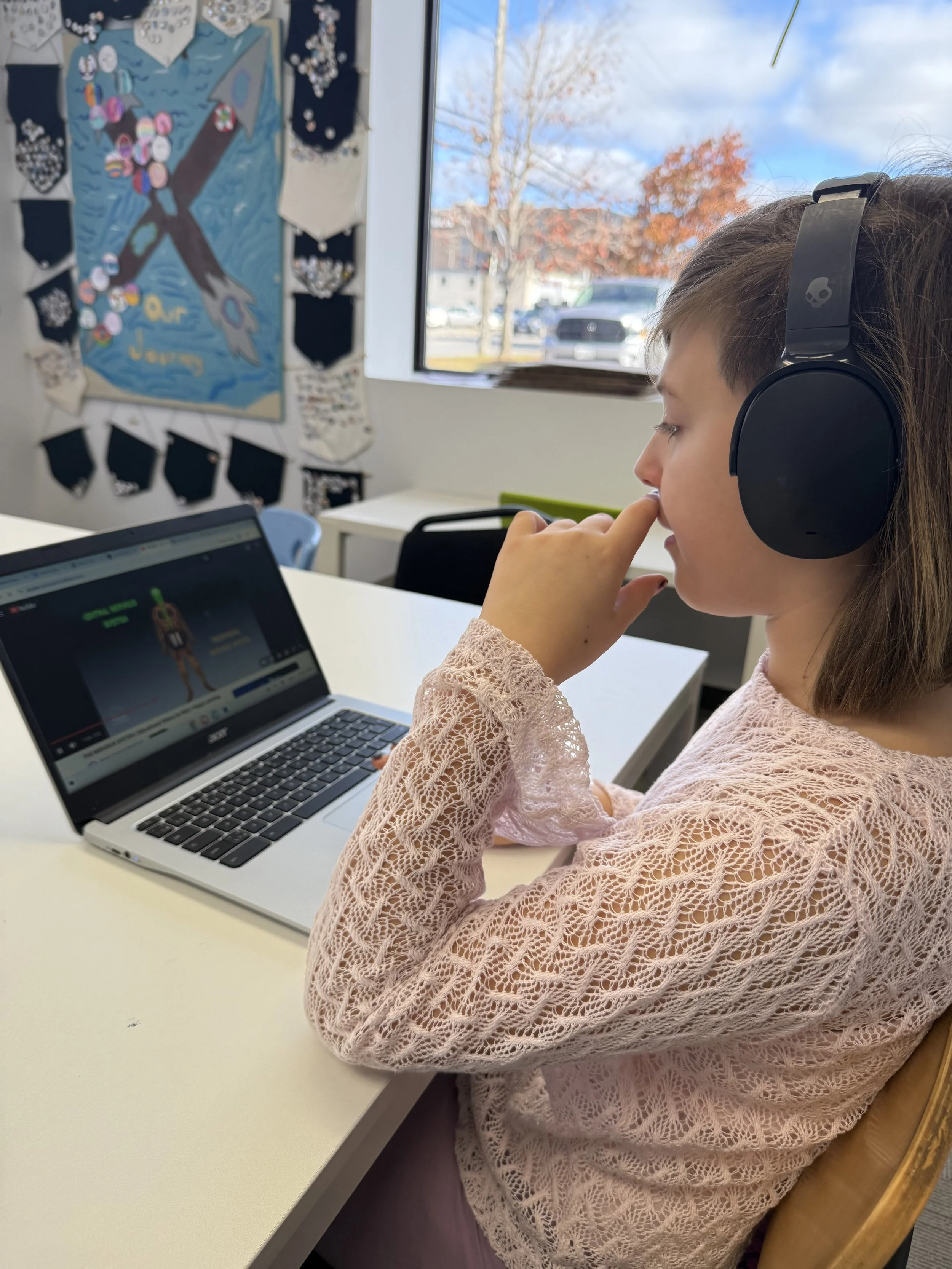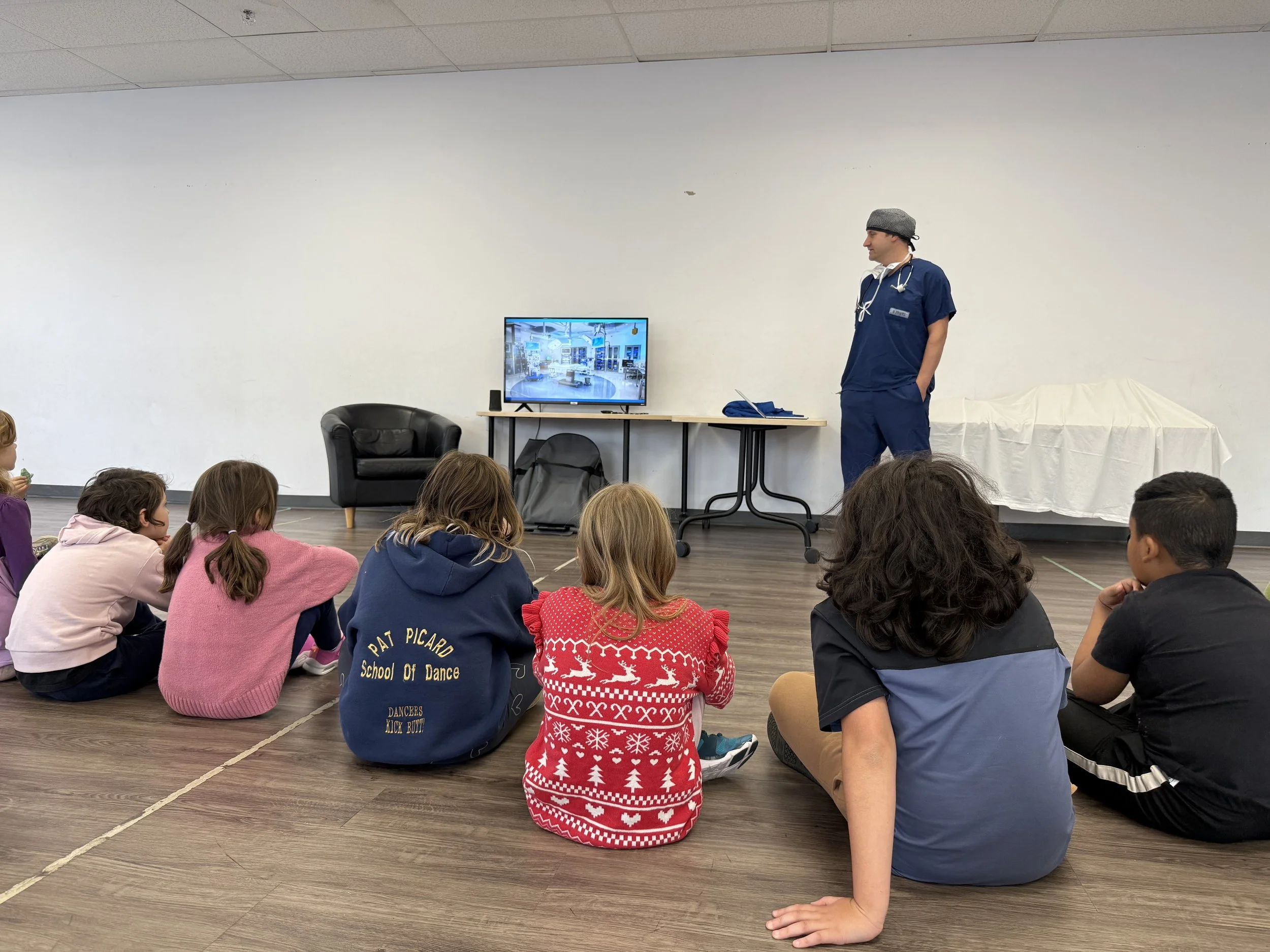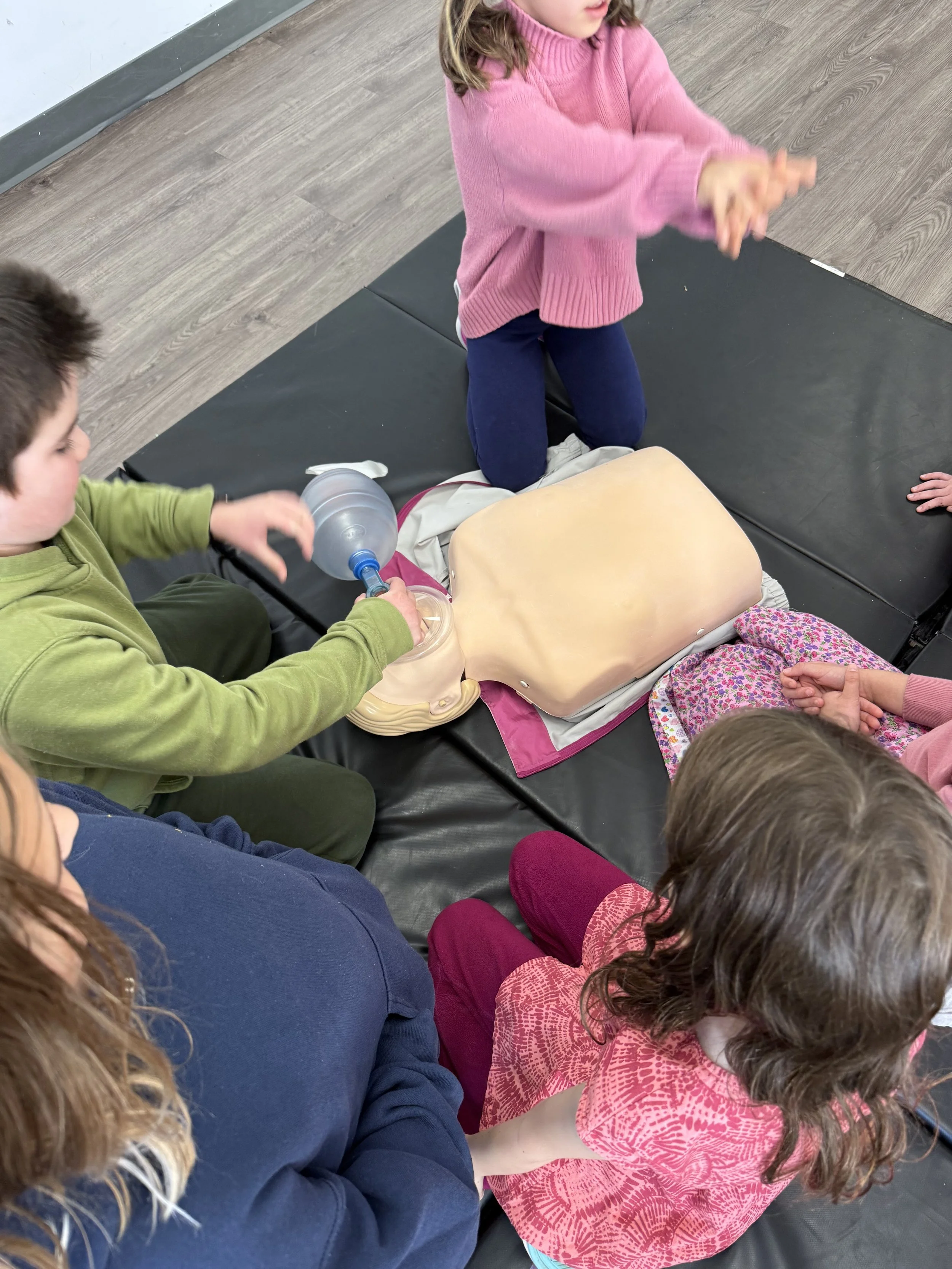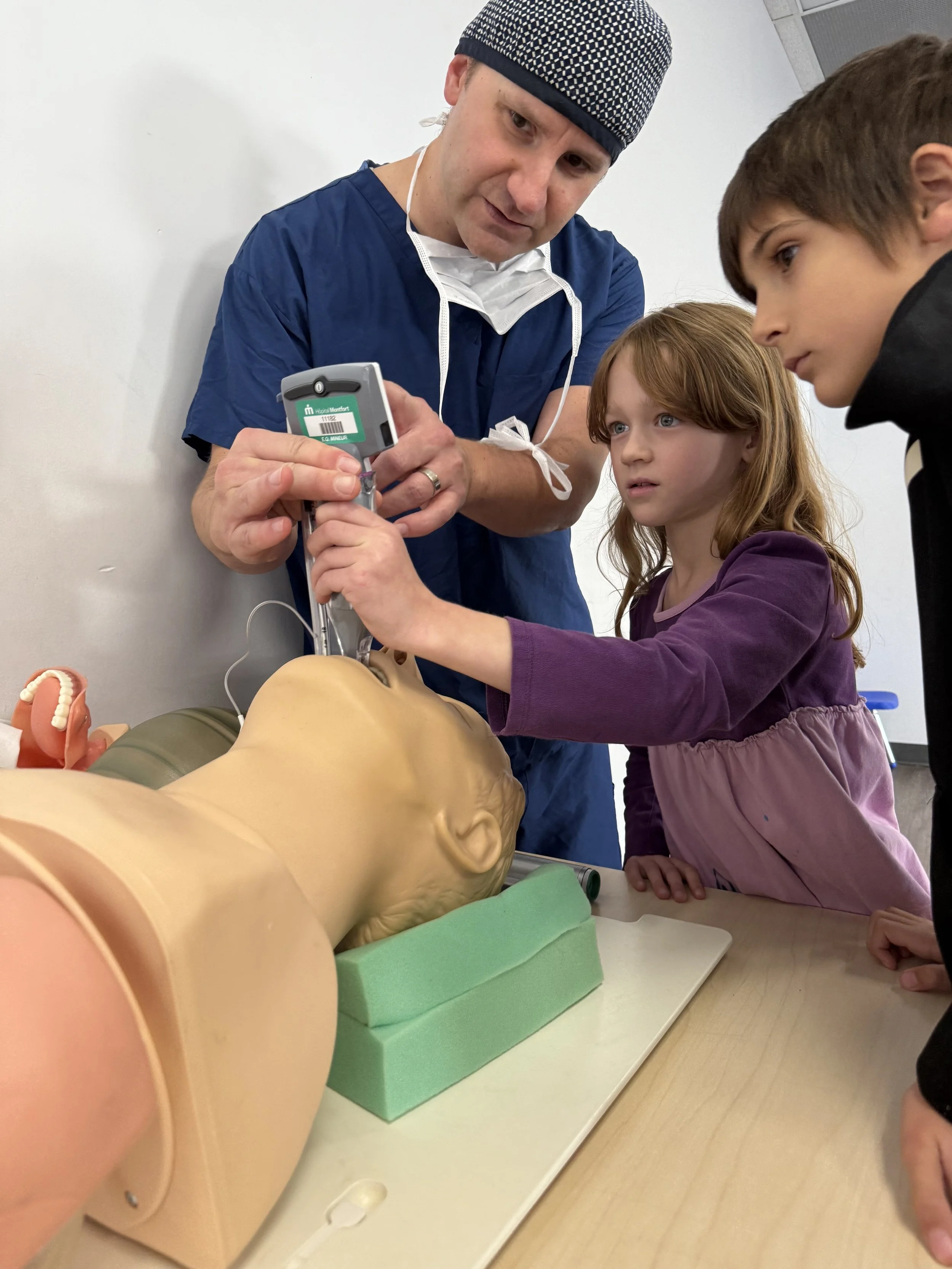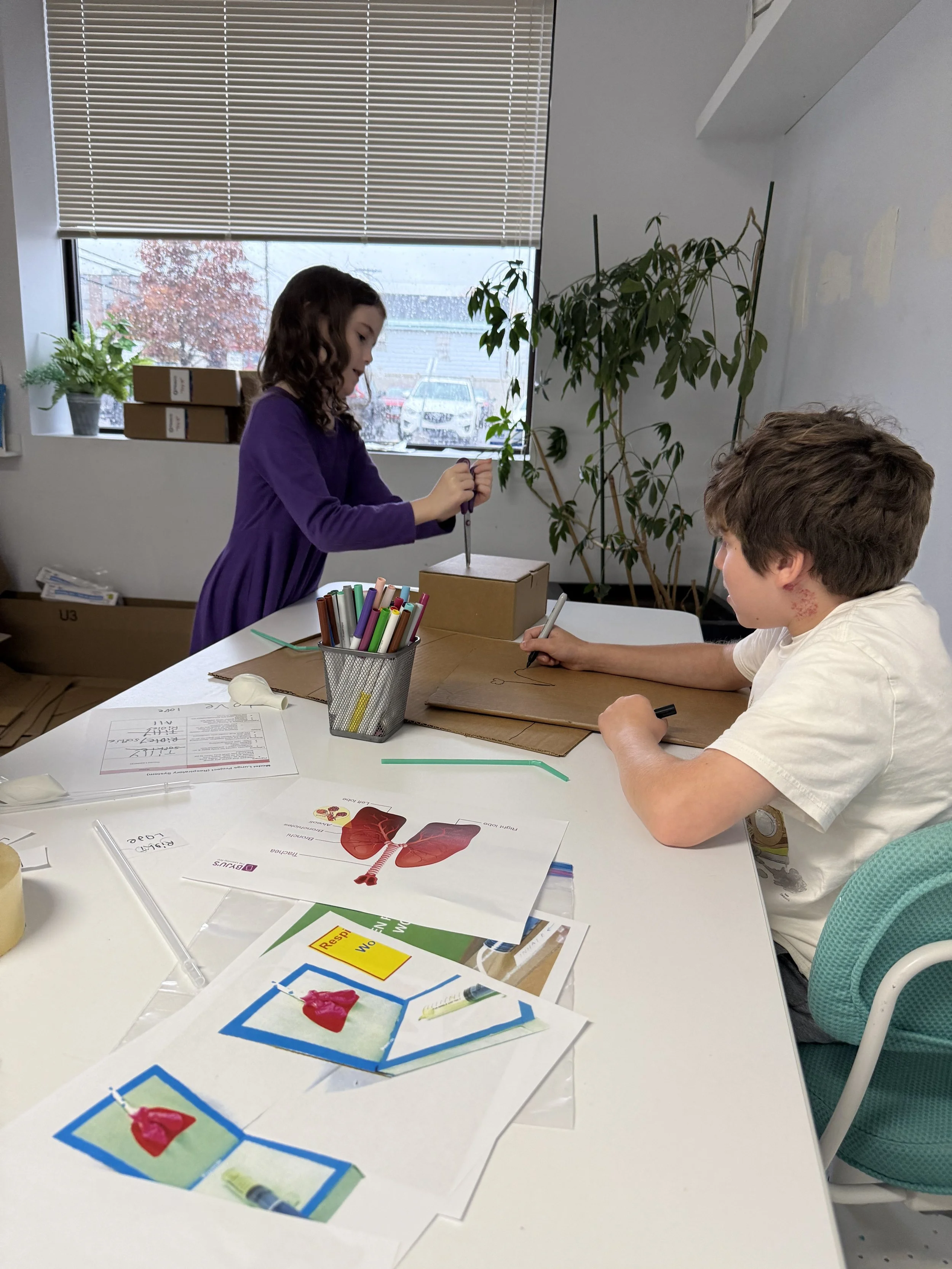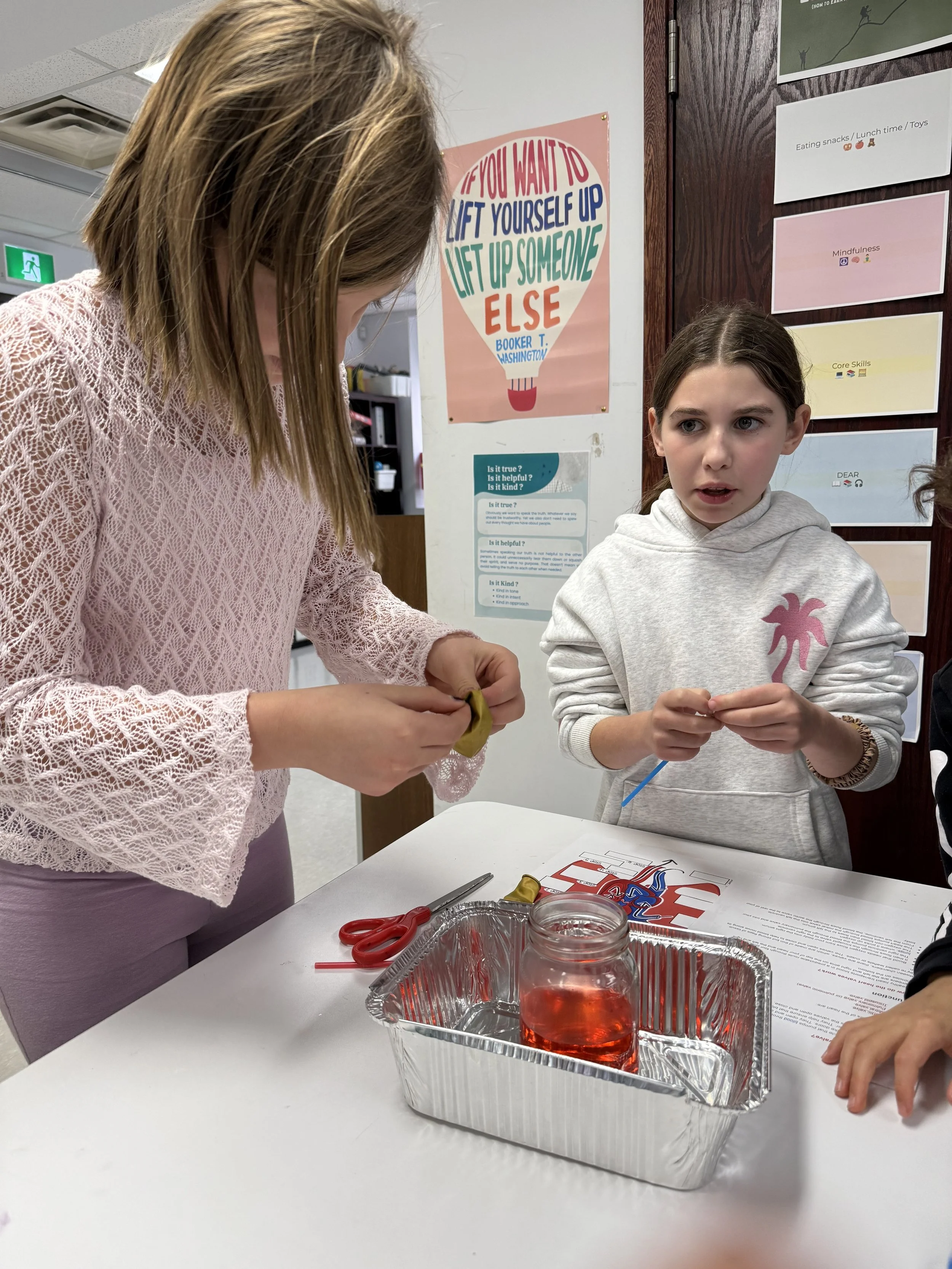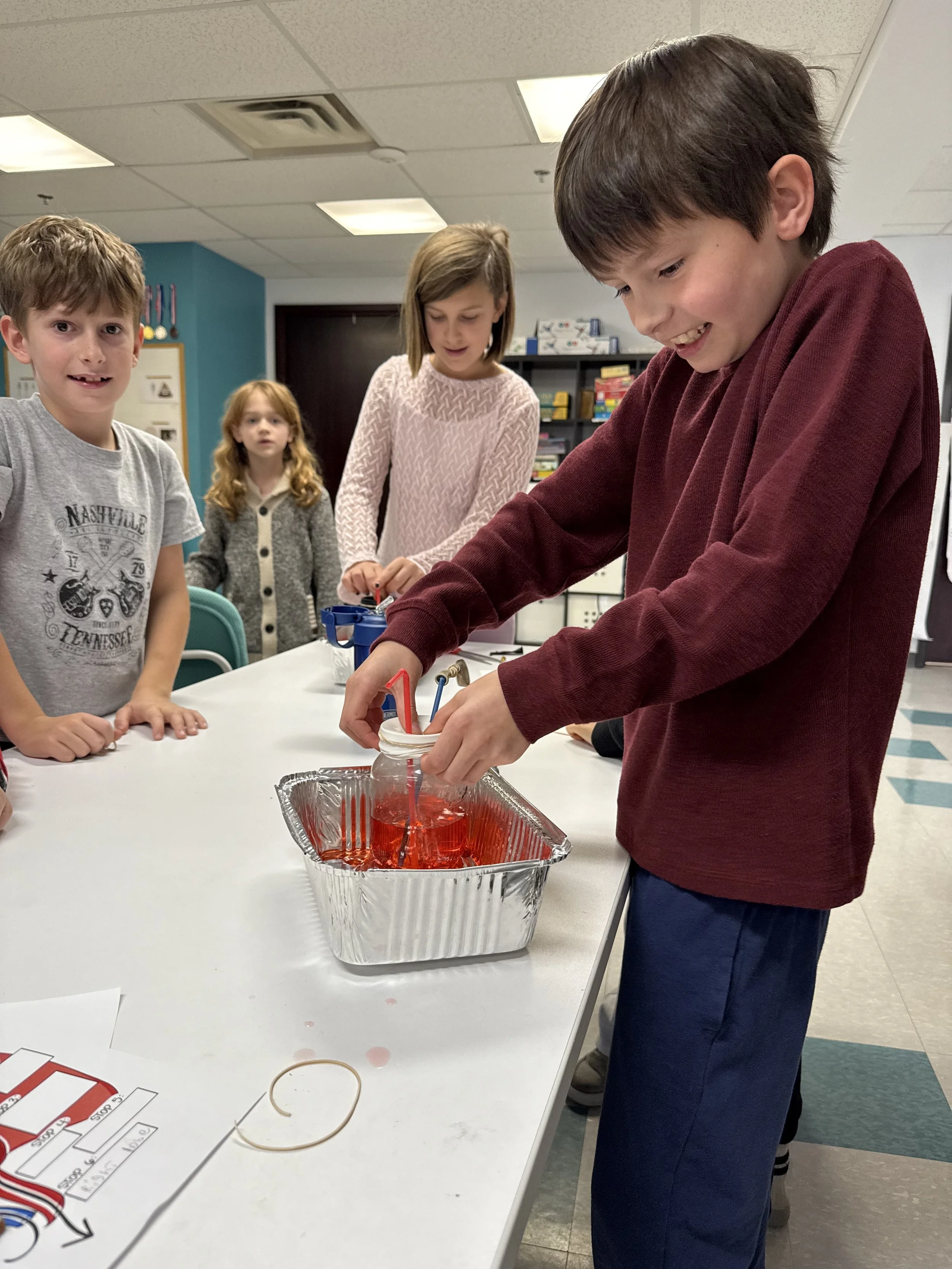Revel Recap: Nov 3-7
Important Upcoming Dates
Yearbook cover submissions are due on Monday, November 17th
Session 2 Exhibitions
Exploration Studio: Monday, November 24th at 4:15 pm
Discovery Studio: Tuesday, November 25th at 4:15 pm
Spark Studio: Wednesday, November 26th at 4:15 pm
Spark Studio
Mindfulness and Launch
On Monday, we began our week with a special launch from an Exploration Studio learner who is working on the school yearbook. She shared with the Sparks how to design a creative cover or back page for the yearbook. The Sparks are invited to submit their drawings by November 17th, and voting will take place between November 19th and 21st. As for our first mindfulness activity of the morning, we most definitely introduced coding during a read-aloud called, Coding to Kindness by Valerie Sousa. Throughout the story, three friends faced different conflicts, and the book included maps that allowed learners to “code” solutions to help the characters resolve their problems. Together, we explored directional words such as right, left, up, and down, and used these to navigate the maps. Afterward, we reflected on how coding can happen in friendships. When there are conflicts, Sparks can follow certain steps or a “kindness code” to work through challenges and rebuild the friendship. On Tuesday the Sparks had a launch about music with boomwhackers and coding. The guide shared that they are connected through patterns, sequencing, and teamwork! Sparks shared thoughts about the size, colours and lettering on each boomwhacker. They made patterns such as yellow, red, yellow, red to find a rhythm. At the end we called these sound codes. Together they made a variety of sound codes and tested them out as a group. After experimenting with their own sound codes, the Sparks ended with follow-along songs with the Boomwhackers. On Wednesday, the Sparks learned about Zumba. They discovered how Zumba connects to coding, as it involves following a sequence of steps to create a routine. As a group, the Sparks danced together to a fun Zumba routine called, I like To Move It. Afterwards, the Sparks were split into small groups and were provided a set of action words such as, crab crawl, shake, chop or moonwalk, along with numbers from 1-10 representing the beats in the song. Their challenge was to “code” a stuffed animal to perform a sequence of moves using their chosen actions and beats. Thursday, the Sparks did a Minecraft yoga clip. They did poses such as the wood chopper, block of wood pose, planks and crafting table. To end the week, we started with Kids News, reading an article, Robotic Rabbits Take On Giant Pythons In Florida. The article shared how Scientists in Florida have turned to an unusual tool in the fight against invasive Burmese pythons using remote controlled robotic rabbits! To end our week, the Sparks worked on their gratitude journals, where they were asked to share a toy they are grateful for at home or at school.
Quest
The Spark studio is beginning a journey into the world of coding and sequencing. Monday, they explored the concepts of directions (forward, backward, left, right, up, and down). To bring these words into life, they went into the gym for some coding fun using snowballs. Guides would call out different commands such as, “pick the snowball up with your left hand!” or “throw your snowball to the right, then above your head!”. Once everyone became familiar with simple instructions, the Sparks were challenged to follow longer sequences. If their “code” didn’t work as planned, they had to start over and try again, learning that problem solving can be ongoing in one activity. On Tuesday, the purple mouse was brought into the studio. The Sparks were eager to learn about the robot mouse. They were provided maps that the mouse had to follow to find the cheese. They would press the corresponding colour-coded buttons on the mouse’s back to input their program. Once their code was ready, they pressed the green “go” button to test it. If the mouse did not reach the cheese, the Sparks reflected on their sequence and debugged their code, adjusting their plan to find a new solution. At the end of the lesson, most learners wanted to use the robot mouse for free exploration. The learners established their own set of rules for using the robot mouse including how many learners can explore with the mouse at one time.
On Thursday, we had an exciting visit from Ottawa Robotics! We began the presentation by exploring how our human senses are similar to the sensors robots use to understand the world around them. Next, we enjoyed a fascinating robotics demonstration featuring some incredible robots: a dinosaur pet, a dancing robot, a wall-climbing lizard, and even a six-legged spider that could dance and sing! Afterward, we worked in small groups to code our own Ozobots. Using coloured markers, we created tracks and codes for our tiny robots to follow. It was so fun to watch the Ozobots move along the paths we designed! To end the week they were introduced to Cubetto, a little wooden robot who loves to explore and learn. They started by reading the instructions about each piece the robot offers. The story they followed was called a Deep Space Adventure. The story started with Cubetto leaving school feeling tired after a busy day of learning. When he got home, he skipped dinner and quickly fell asleep. As he drifted into a dream, he began to dream of stars, planets and the great unknown of outer space. In his dream, Cubetto became an astronaut. With help from the Sparks, Cubetto set off on a journey across the compass map, using simple direction blocks to guide his path through space. Each command, forward, left or right brought him closer to discovering new places.
Art
The Sparks took part in an exciting art workshop using artificial intelligence. Guides gave an AI bot a simple prompt, “Robot on a hill”, then asked it to generate a step by step set of drawing instructions. The Sparks followed along through 12 coded steps, without knowing what their final picture would be. By carefully following the instructions, their artwork was revealed.
Reader/Writer Workshops
Group 1 worked on the letters F, G, H, & J. Each learner chose either letter F or G and came up with a person, place or thing to draw for their story card. Together they collaborated and came up with a sentence or two for each to create an interactive story. The story will be posted at Exhibition for families to read. Throughout the week they also completed activity pages with the same letters. They used the alphabet tubs to sort the objects that have the matching phonetic sound. This weekend, we challenge your family to create a list of words that start with the letters F, G, H and J, and ask your Rebel to find objects around your home that start with those letters. Meanwhile, Group 2 focused on the digraph “th.” After listening to our phonics video, learners used the Waseca materials to spell out words containing “th” at both the beginning and end of words. Some of the words we practiced were thin, think, thumb, that, bath, with, math, and moth. The group did a great job sounding out the words and paying close attention to staying between the lines and using correct letter sizing in their writing. Next, each learner completed a reading comprehension page. They read a short story aloud to a Guide and then answered three questions about what they read. Great work this week, Rebels!
Math Workshops
Learners took on an exciting new challenge this week! After spending the past couple of weeks mastering single-digit subtraction, they were ready to explore larger numbers. Using the Montessori Stamp Game, we worked together to create and solve four-digit subtraction equations. The Stamp Game is a hands-on Montessori material that uses small colored tiles to represent various units (ones, tens, hundreds, and thousands) allowing the learners to see and feel place value as they work through operations. We solved several equations together as a group. This was also wonderful practice for reading and saying larger numbers out loud.
Afterwards, learners completed their subtraction booklets using linking cubes as a concrete tool to help them find their answers.
French
This week, we had so much fun learning about the parts of the body and the five senses! On Monday, we colored pictures of the five senses and practiced saying: Je sens (I smell), Je goûte (I taste), Je vois (I see), j’entends (I hear), je touche (I touch). On Tuesday, we watched a short video of «Mimi Soleil» to keep learning about body parts.
Apprendre les parties du corps en français – Comptines et chansons pour enfants
Wednesday, we had a great time playing with Mr. Potato Head while naming and placing the different body parts. Thursday’s workshop in the gym, gave Rebels the opportunity to play Colour Bulldog and another fun game where we had to find and bring the correct body part to Mr. Potato Head.
Geography
A variety of languages are spoken within North America and even within the Revel community. Learners shared their mother tongue languages with the Sparks and taught each other how to greet others in that language. Some learners shared that they speak French, English, Russian, Spanish, Tamil, Czech and Bulgarian. Since we all currently reside in Canada, we focused on creating the Canadian Flag this week. Around the Canadian flag they wrote a variety of ways to say, hello. Examples such as, hello, ahoy, zdravei, hola and bonjour!
Additional Highlights
STEAMpunks visited this week to conduct a series of exciting experiments using dry ice. Each learner had their own set of materials, including test tubes, dry ice and a variety of colourful liquids. The first experiment involved placing a metal spoon on top of dry ice to hear the fascinating vibrations it produced. Next, learners added water to a test tube with many pieces of dry ice, watching as it rapidly changed through states of matter, turning from a solid directly into a gas creating bubbly water and a thick white fog. In the next experiment, they mixed dish soap and water with dry ice into their other tubes. It results in a fun, volcano-like eruption of foamy bubbles. Lastly, they used a cotton string around the rim of a bowl, creating giant bubbles filled with fog.
Discovery Studio
Mindfulness and Launch
On Monday, the Rebels started their week with intention, with a Headspace meditation. They were invited to find a comfortable position and listen to the guided relaxation for about ten minutes. At the end, Rebels shared they were feeling calm and sleepy. For launch, we made a KWL chart (what do I know, wonder and want to learn about) all about the circulatory and respiratory systems that we’d soon explore in Quest. In particular, Rebels already know a lot about the lungs and heart. They brainstormed some great questions about how blood and oxygen move throughout the body, how blood is made and what happens when you have a heart attack? On Tuesday, Rebels gathered for a Dia de los Muertos colouring activity, followed by a very exciting launch! Rebels stepped into the shoes of the top neurosurgical team in Canada and had to decide if they would perform a scheduled surgery in their hospital or pause their surgery to take a call from another smaller hospital for expert consult. We watched a Global News clip showcasing a new AI tool that could help make some of these preliminary consultations more accessible for smaller, less specialized hospital teams to get more information about the scenario. Rebels then voted on whether or not they would use the AI tool and, if so, when? On Wednesday, we played Wordle and Connections - we were able to determine the word of the day on the sixth and final guess AND connected all four categories with only one chance remaining! For the weekly squad check-in, Rebels took some time to reflect on their Quest workshop with a Registered Respiratory Therapist (RRT) in our community, Mr. Goure! Rebels reflected on three key takeaways from the previous day’s workshop before heading into Core Skills. Thursday’s Thank You for Sharing brought a discussion about what items the Rebels would bring with them on a desert island and which country they would travel to, given the choice. Launch was inspired by a podcast episode from Diary of a CEO with Brene Brown on the anatomy of trust using her “Marble Jar Theory”. Rebels discussed what trust means to them and contemplated what makes a friend “trustworthy”? We read an excerpt from the podcast about interactions with people around us and actions that build trust (add a marble to our marble jars) or break trust (take away marbles from our jars). Rebels reflected on moments in their own lives when their “marble jar friends” or family members built trust by helping them, playing with them, taking care of them, not laughing when they felt embarrassed, etc. We wrapped up with the quote “Trust is built in small moments” to take us into the rest of the day and thought about what we could do moving forward to continue to fill up our teammates’ marble jars. Friday morning we warmed up the Boomwhackers and then played a rendition of “Spooky, Scary Skeletons” and “I Want It That Way” by the Backstreet Boys. The Current Events report featured updates about the devastating loss of the Blue Jays last week at the World Series, a new Pokémon inspired tattoo artist from Japan, and a hot debate about when is it appropriate to start decorating our houses for the holidays.
Math Lab
This week’s focus was making connections between one and two dimensional measurements: perimeter and area. Both groups took mini field-trips to the fenced-in area to estimate and/or measure its dimensions using metre sticks. We also made a model of a square metre and then tried to estimate the area of our outdoor space and flex our spatial reasoning skills! Back inside the lab, Rebels then worked in small teams to use their linear dimensions to make smaller concrete models or representations of the space, and some even used formulas to try and organize their calculations of the perimeter and area more abstractly. Along the way, we encountered some problems: what happens when we get to a corner and the metre stick doesn’t fit? How do we measure this part? If we can measure it, how do we calculate with partial metres? What happens if we made our measurements with inches? And in Group 2, how many square centimeters “fit” inside one square metre?
Reader/Writer
During our workshops this week, Rebels explored the Circulatory and Respiratory Systems more in depth. Draw and Anchor Rebels had a few options in terms of which direction they wanted to go in Tuesday’s workshop. Rebels had the opportunity to select which system of the two they would like to add to their journal, and whether they wanted to participate in a guided read aloud or listen to an audio recording and work independently. As we continue to get to know our Discovery learners, offering our learners the opportunity to select learning methods that best fit their needs is a major component of our workshops. With many opting to stay and take part in the guided read aloud, some opted for the audio versions and working solo in a Pod Room or the Silent Work Area while they attempted to complete not one journal entry, but both! Rebels who stayed for the guided workshop voted to do the circulatory system article, and Rebels had a meaningful discussion on what happens to our systems as we age, what can benefit or negatively impact our veins, arteries and capillaries ability to move blood around our bodies? Learners spent the second half of our workshop adding facts and important vocabulary to our journals. On Thursday, Aim and Release Rebels continued chipping away at their Human Body Reports. We kicked off the workshop with a mid-session check in to see where everyone was at and create a plan for the next couple of weeks to ensure our reports would be ready for display at Exhibition. Rebels felt as though they had been using their time wisely during the workshops so far, and made specific goals about which paragraphs they wanted to have completed for review by the end of Week 3 and Week 4.
French
This week, we had fun playing “Cross Canada” in French! In this game, our French Guide called out characteristics (wears glasses, has brown hair, wears earrings, etc). Those who matched the description could cross the gym without being chased, while the others had to run and try not to get caught! We also played a game called “Bingo Description.” Using a large picture filled with different people, everyone had to find the ones that matched the given descriptions and try to get a bingo. These activities were a way to practice French vocabulary and listening skills while incorporating body movements.
Civilizations
This week’s chapter was about the Assyrian empire and Shamshi-Adad’s dictatorship. Rebels started out by highlighting the city of Assur, shading the region of Assyria, and locating Babylonia (from last week) on their maps. Then we read about the way Shamshi-Adad conquered cities and took control of them and their people, which was very different from Hammurabi’s leadership style in Babylonia and the “code” we learned about last week. Additionally, we read a mythical story about Gilgamesh and Enkidu, and Rebels discussed and shared stories that have had a big impact on them in some way.
Quest
For Week 3, Rebels took a deep dive into the body’s ultimate “dream team”: the heart and lungs! The circulatory and respiratory systems gave the Rebels a lot to think about this week as we learned about the specific body parts pertaining to each system and their functions. Monday’s research period saw Rebels tackling some incredibly complex vocabulary, with conversations overheard in the studio using words like “atria, ventricles, septums, oxygen-rich, oxygen-poor, trachea, bronchioles, bronchus” and more! Rebels completed a Web-Quest activity where they explored various articles and videos to help them complete a booklet independently or in pairs, focusing on the body parts and how these systems work individually and collectively. On Tuesday, we had a very special guest speaker in to visit, who ran a workshop with the Rebels all about the respiratory system! Mr. Goure, a Registered Respiratory Therapist at Montfort Hospital, came in to chat with us about how our lungs function, what an RRT does to help others and brought in some incredible hands-on equipment for the Rebels to explore. Rebels learned and performed CPR on both adult and infant mannequins (to the tune of “Stayin’ Alive” by the Beegees, as the BPM matches the timing of compressions when giving CPR), observed and attempted to insert a tube into a “patient’s” trachea (the tube had a camera, so Rebels could actually see the inside of the patient’s throat and what some of these body parts looked like!) and tracked and compared their resting and active heart rates using pulse oximeters. The Rebels had so much fun getting to work with a Respiration “Tree”apist and it was a major highlight of our week!
Wednesday and Thursday’s Quest blocks gave the Rebels an opportunity to get their creative juices flowing as they constructed model lungs and a pumping heart! We wrapped up the week discussing various heart and lung diseases and ways that learners can take care of our respiratory and circulatory systems to prolong and enrich our quality of life. Up next week, we head south to the stomach to learn more about the highly anticipated Digestive and Excretory systems!
Exploration Studio
Mindfulness & Launch
After comparing and contrasting the definitions of sympathy and empathy, we discussed that empathetic people display deep listening, perspective-taking, emotional recognition, non-verbal communication, compassionate responses, and cultural sensitivity. Rebels then journaled about a time they disagreed with someone and how the situation may have looked from the other person's perspective. They also considered a recent interaction where someone shared their emotions, their response, and how they could show more empathy and support in the future. Since we finished reading The Hobbit last week, we reviewed the expectations for picking and pitching a Deep Book. Rebels also submitted their first and second choices of countries for their Session 3 Quest. After a Yearbook Cover Contest announcement from our Yearbook committee, Rebels worked on Lesson 9 (see below) in their Becoming a Critical Thinker workbook on Wednesday. Rebels continued working on their Fauvist-inspired animal portrait paintings on Wednesday morning, focusing on filling in the light spots with warm watercolours and adding texture with coloured pencils. After their Thursday morning walk up Carlington Hill and around the neighbourhood, Rebels continued their technical drawing practice by adding windows and doors to an apartment building and furnishings to a bedroom. Friday, learners organized and ran the morning puzzles and the Current Events report.
Reader/Writer Workshop & The Hobbit
We used our Reader/Writer workshop on Monday to finish our last Hobbit analysis questions, complete the Chapter 15 - 19 vocabulary handout and go over both as a studio. Rebels then took the last reading quiz to demonstrate their understanding of the book's final chapters. Next week, learners will begin their essay using the graphic organizer they were given at the beginning of the unit.
Reading Challenge, Paragraph of the Week and Grammar
This week's Reading Challenge focused on plot structure. Rebels reviewed the five stages of a plot (exposition, rising action, climax, falling action, and resolution) and learned about the three main types of plots: linear, flashback/flashforward, and in media res. Independently, they completed the challenge, which involved reading a story and identifying the different plot points to uncover a secret password.
We continued our grammar focus by reviewing commas and conjunctions. On Monday, Rebels learned about independent clauses and how when you join two independent clauses using a conjunction (for, and, nor, but, or, yet, so), you need a comma before the conjunction. Tuesday, they corrected sentences by adding the missing commas before writing their own paragraph with at least three sentences that correctly use commas with conjunctions on Wednesday. They were then confident enough to team up and independently edit a paragraph on Thursday and Friday.
Rebels also wrote a narrative paragraph about a retired superhero grappling with the challenges of an ordinary existence. During their free-write on Monday, they allowed their thoughts to flow freely, ensuring that they integrated dialogue between two of the characters. Throughout the week, they improved the characterization in their piece by identifying opportunities for both direct and indirect characterization, revised to enhance the description of the emotions their characters were experiencing, ensured proper capitalization, and then wrote their final paragraph for submission.
Quest - Biomimicry
What is and is not biomimicry? Rebels warmed up by reading a series of statements and determining which were biomimicry, which were biomorphism, and which were bioutilization. We then learned about the Biomimicry Design Process (Define, Biologize, Discover, Abstract, Emulate, and Evaluate). Since Rebels had finished the Define stage last week, we used our Quest time on Monday to translate our problems into a research question to ask nature (biologize). The goal was to reframe the functions of their design using biological terms and then "ask nature" for advice. With the help of our Biologize Function and Context worksheet and the Biomimicry Taxonomy page, they created their "How does nature…." question. After they finished their iterations of biologizing the function, they were ready to move into the next phase, discovering biological organisms that have solved similar problems. Using the Ask Nature website, they researched 2-5 effective strategies from the biological world and drew sketches of the mechanism with as much clarity as possible. After the examples were chosen, learners identified the underlying working principles that can be applied in a design solution. Biomimicry designers achieve this by utilizing the mechanisms that enable the biological strategy to function and restate them without employing biology-specific terminology. We learned to think of it as the reverse of "biologizing" the design question; now, we are "design-ifying" the biological strategies. For each biological strategy, Rebels wrote a complete sentence that included the organism, the function (WHAT it does), and the mechanism (HOW it's done). (Example: The antennae of the honeybee enable smooth landings by sensing the landing distance and angle, signalling the body to orient appropriately.) Using the Biology to Engineering Thesaurus, groups rewrote the biological strategy using the engineering/design words that were substituted for biological words. On Wednesday, the Rebels continued working on the previous week's challenges and prepared to present their ideas. On Thursday, the studio met to give one another feedback on their progress. It was a much-needed opportunity to share their discoveries and help those who were struggling or stuck. They then selected from a list of strategies (Creature Cards, Mind Map, and Chart) to examine their bio-inspired design strategies, aiming to uncover potentially valuable patterns and insights. They ended this week's Quest with a reflection in preparation for next week's design phase.
Civilizations
Why is the formation of stars important? This week, Rebels learned how the first stars formed and how their lives and deaths created the ingredients for the next threshold - Threshold 2. Learners began the lesson by testing what they know, or think they know, about stars by organizing a series of pictures from the beginning of star formation to its end. We then learned about the ingredients and "Goldilocks Conditions" that allowed stars to form with the help of multiple online and offline resources. We ended class reading a comic about Cecilia Payne-Gaposchkin, a graduate student who changed what we know by using her intuition and examining the evidence.
Math Lab
We began Math Lab with a Data Talk, using a visual of handwashing to discuss what we notice and wonder about the data visualization. We then had a mini-lesson on standard deviation before using the rest of the class to work on our Dear Data projects. Next week, we will move on to complete a data science project on blue whales.
French
This week, the Rebels continue playing Loups-Garous (Werewolf) entirely in French, using our list of key words and useful phrases to help with communication during the game. Next week, they will take on a new challenge, becoming the game leaders themselves! They’ll be responsible for organizing and running the activity, completely in French.
Personal Finance
After our lesson on fixed and variable needs and wants, the importance of paying yourself first, and emergency funds, Rebels played another month of the Personal Finance Lab Budget Game. "Should I study, work extra hours, do chores, or socialize?!" "I didn't realize how often unexpected expenses come up!" "I'm making bank, but my quality of life is suffering." It was another engaging lesson where Rebels learned even more about budgeting and making sound financial and life decisions.
Becoming a Critical Thinker
Spot The Misinformation! In this week's lesson, Rebels learned about vetting statistics and that the most essential tool in the critical thinking toolkit is caring. We also practiced asking ourselves these two questions each time we encounter important information: How is this information measured? What are its benchmarks? Learners then vetted a list of "facts"for accuracy by asking the questions, identifying any misinformation, and correcting it. Lastly, they journaled on a time they had overturned a belief. What caused them to change their belief? What convinced them to leave the belief behind?
Potential Discussion Ideas or Questions to Ask Your Rebel:
Spark Studio
How did you code the mouse? Were there obstacles? Challenges? Obstacles?
What are characteristics of the witch from the story, How to Catch a Witch?
Group one: What words start with G, H & F
Group two: What sound does th make? What words can you make with that sound?
What happens when you put a metal spoon on top of dry ice?
Which was your favourite robot that you were shown from Ottawa Robotics? Did the code you made work for the Ozobot?
Discovery Studio
Who would you consider a “Marble Jar Friend” in your life? Can you tell me about something they’ve done that helped you trust them?
Can you tell me something you learned from Marcel’s workshop on the respiratory system? What does a Registered Respiratory Therapist do?
What parts of the body are involved in the Circulatory System? What does oxygen-rich blood and oxygen-poor blood mean?
How are lungs similar to trees?
How would we find the perimeter of your room?
What is the difference between the perimeter and area of a space?
How big is a square metre?
How many square centimeters “fit” inside one square metre?
Exploration Studio
What would the “perfect day” look like for you?
Were there any decisions in the Budget Game that you regretted once you made them? What is your focus for the next month?
What were the ingredients and Goldilocks conditions that came together in Threshold 2 to form stars?
What organisms are you thinking you’ll use in your Biomimicry solution?
Are the weekly paragraphs getting easier to write each week? Do you prefer to write the descriptive, narrative, expository, or argmentative paragraphs?
As you’ve hit the midpoint of the session, what will you focus on this next week to stay (or get back) on track?
